Costa Rica and Panama
June, 2004
June 20th
After a week in San Jose, we felt we knew our way around; streets which had seemed so foreign at first were now appearing familiar, having passed over them several times.
Our route out of the country was via Jaco, on the Pacific coast, two hours drive south. Jaco is another surfer's paradise, with inexpensive lodging near the beach and a multitude of surf shops. We stayed at the Pochote Grande Hotel at the recommendation of Mike, the chiropractor in San Jose. The hotel fronts on the beach just far enough out of town to be quiet at night. An 800 year old Pochote tree near the restaurant gives the place it's name.
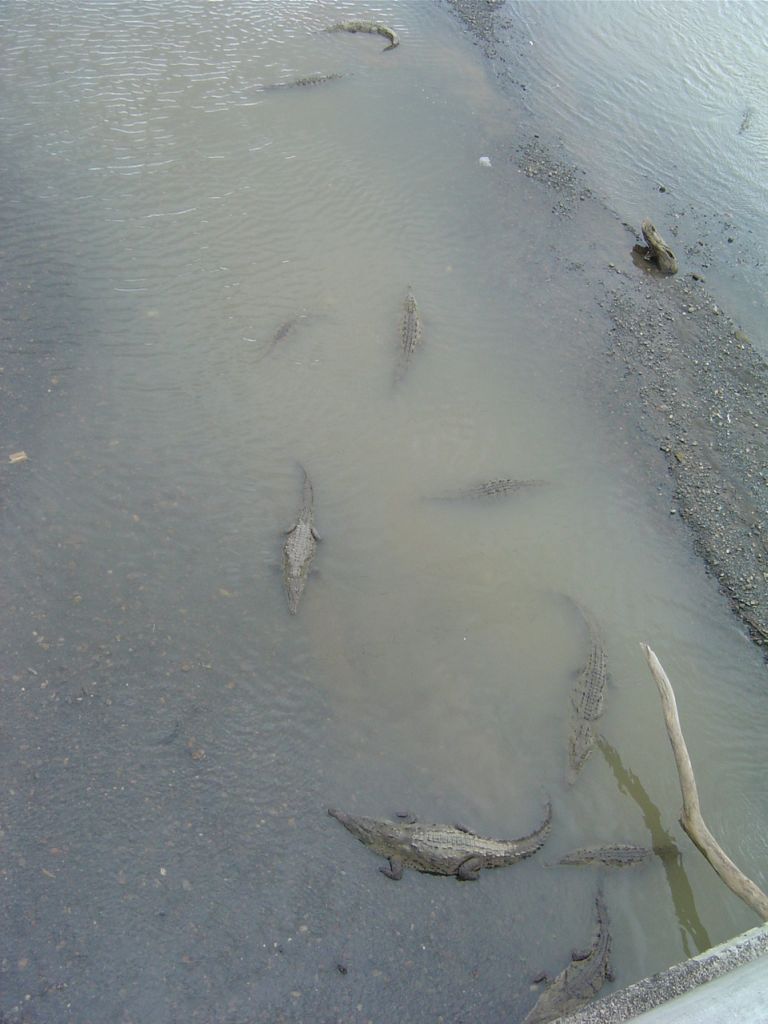
Swimming here is not a good idea
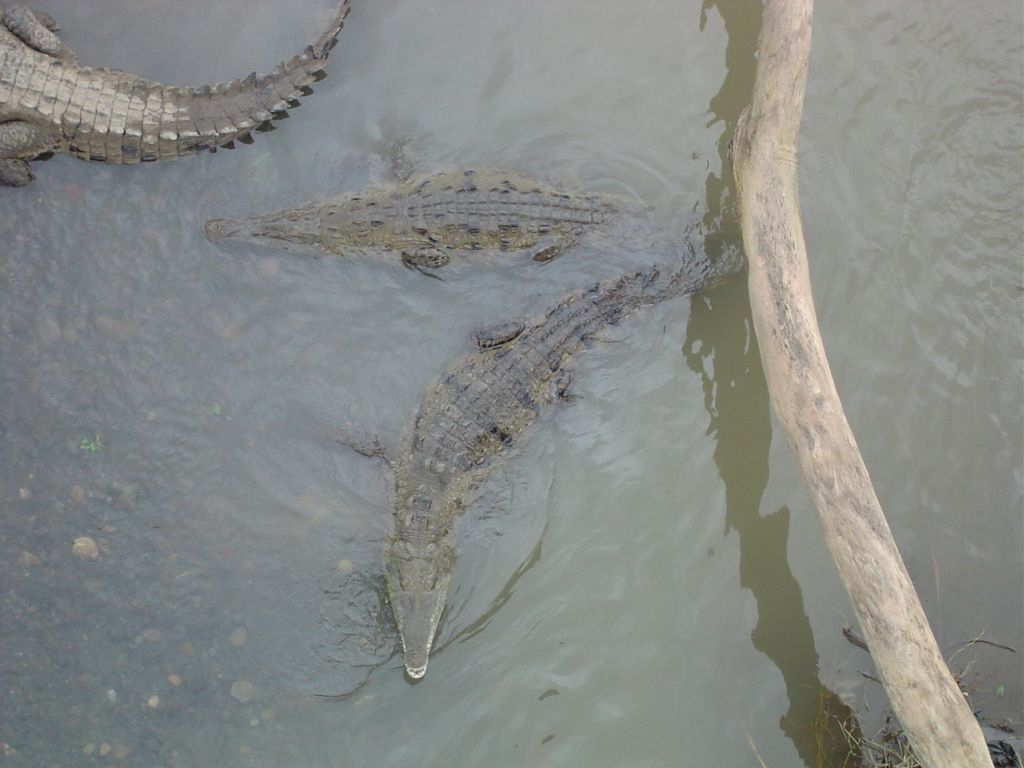
I'm getting hungry. Who are we having for lunch today?
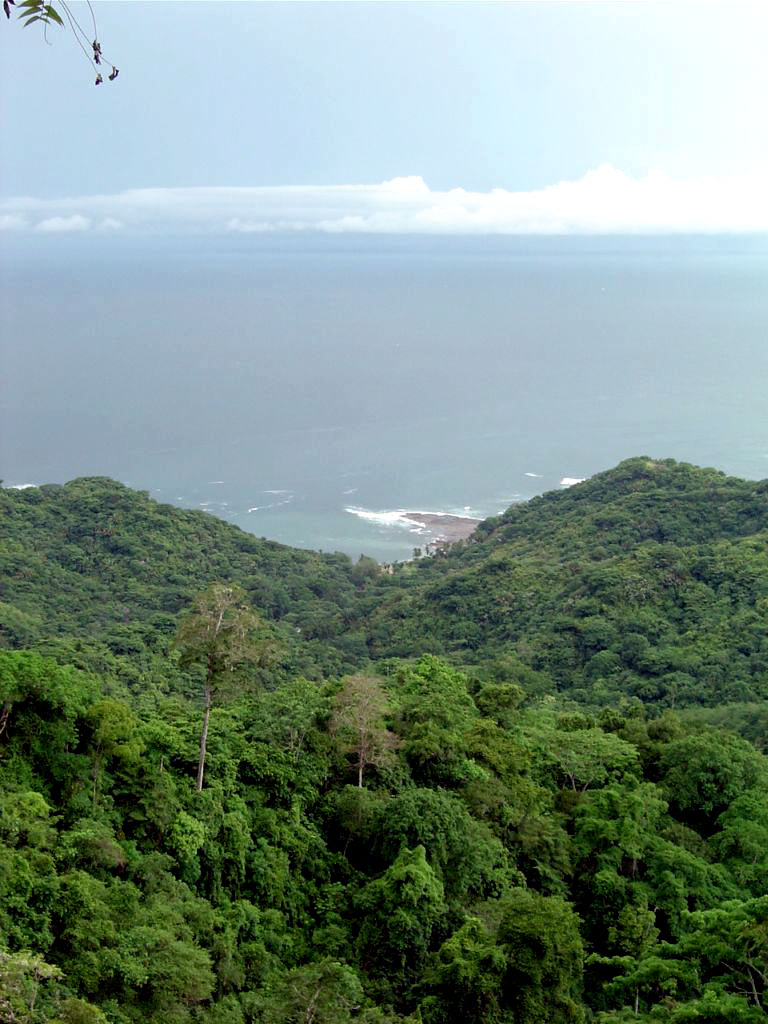
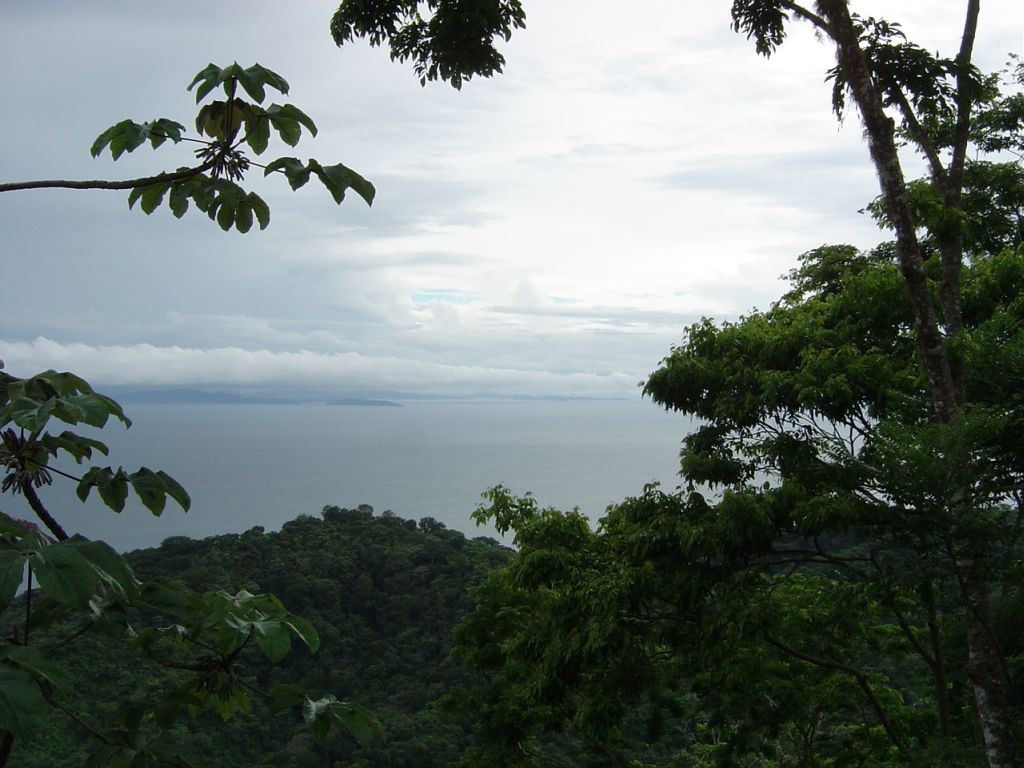
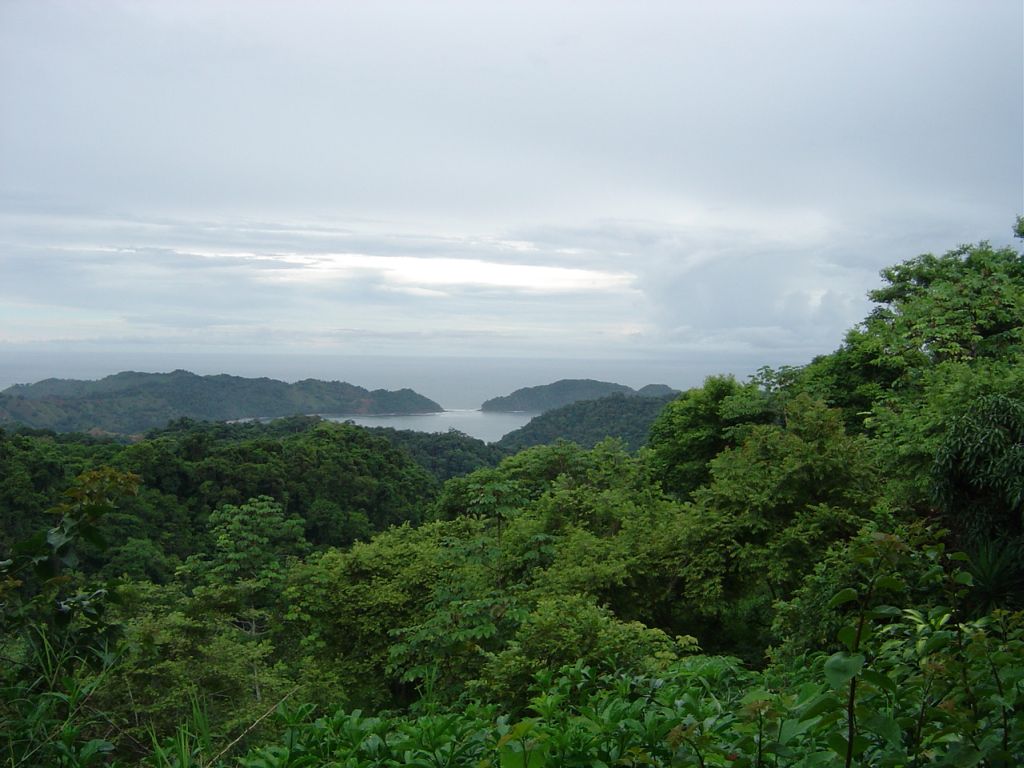
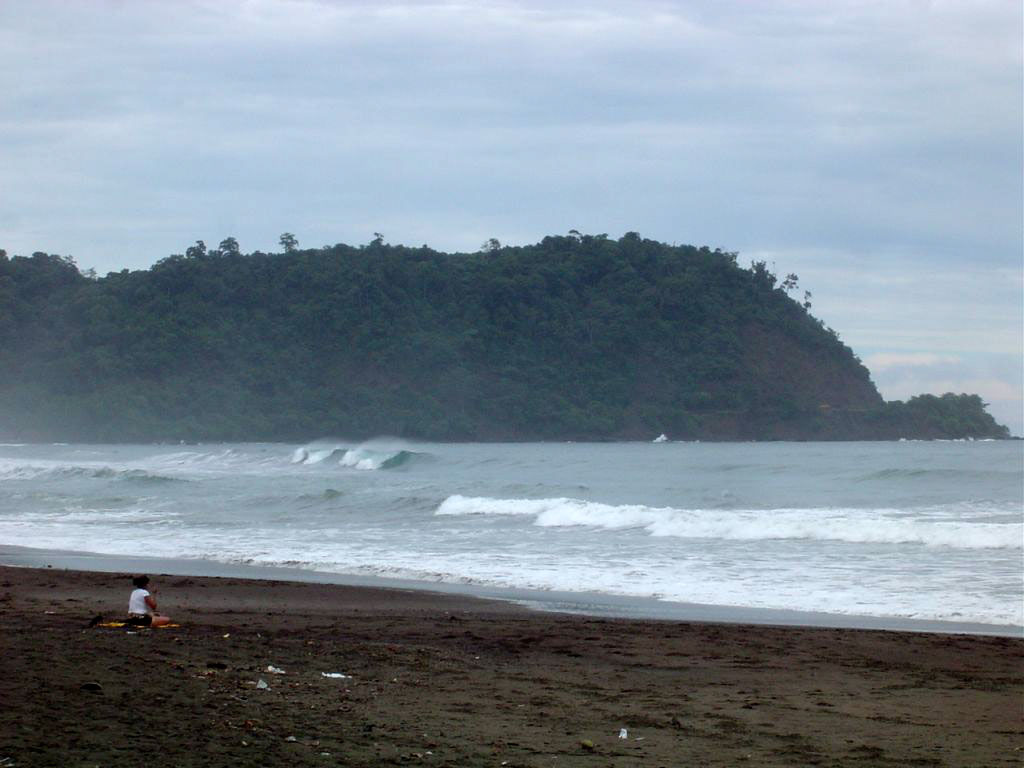
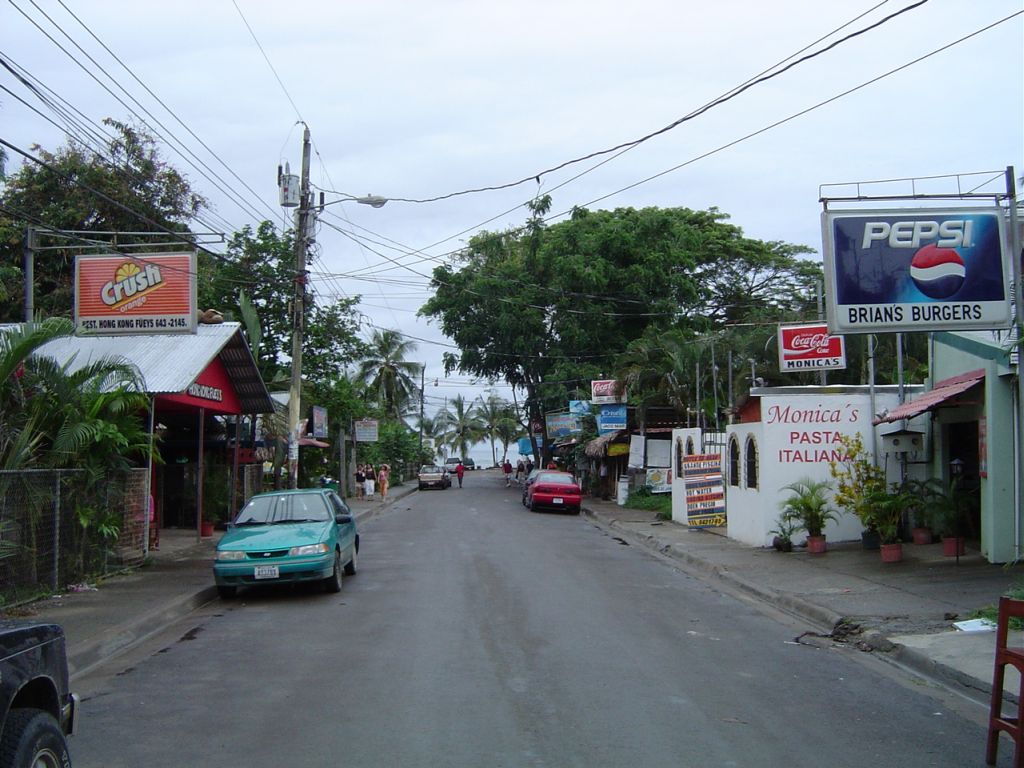
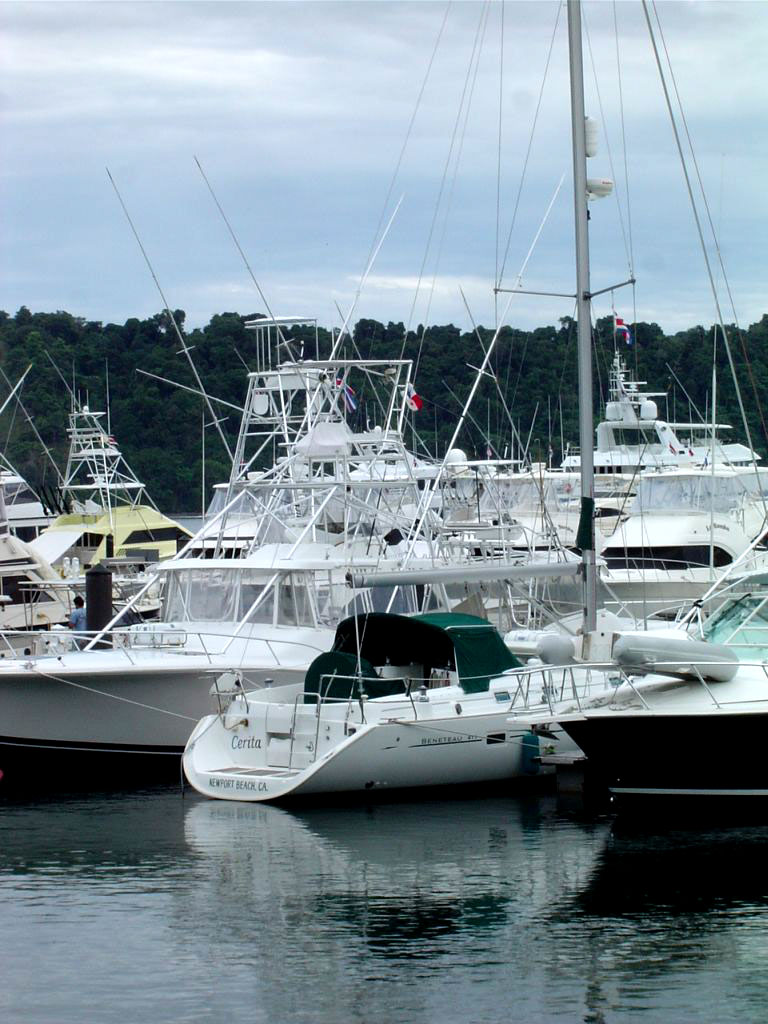
The good ship, Cerrita, from Newport Beach
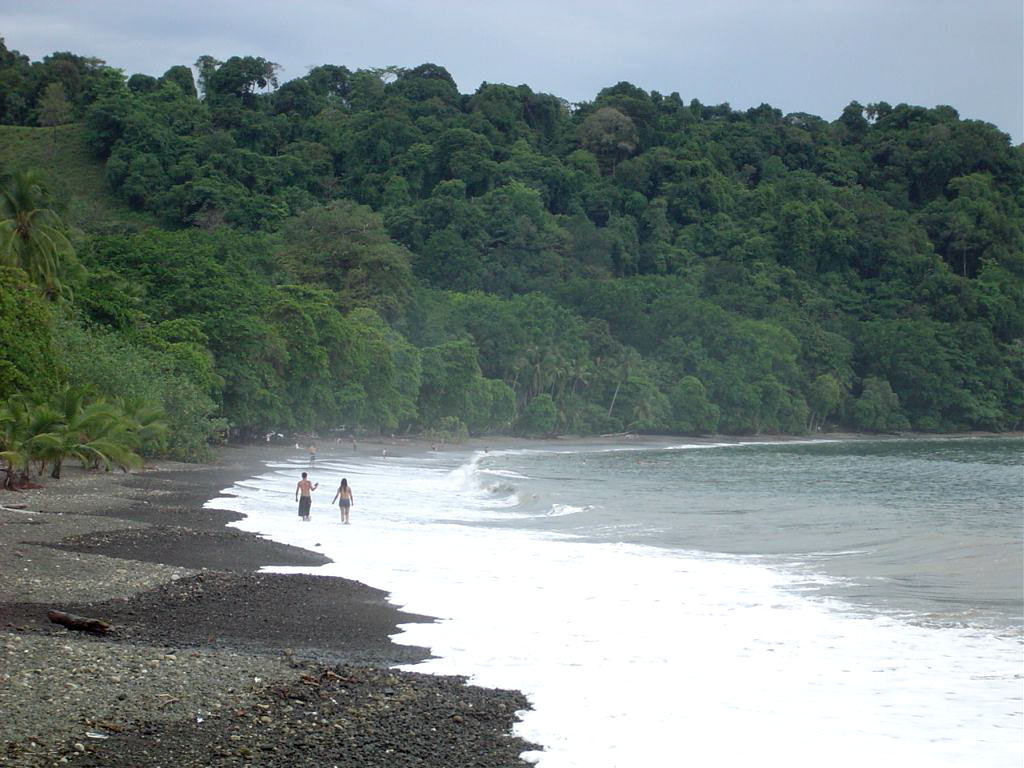
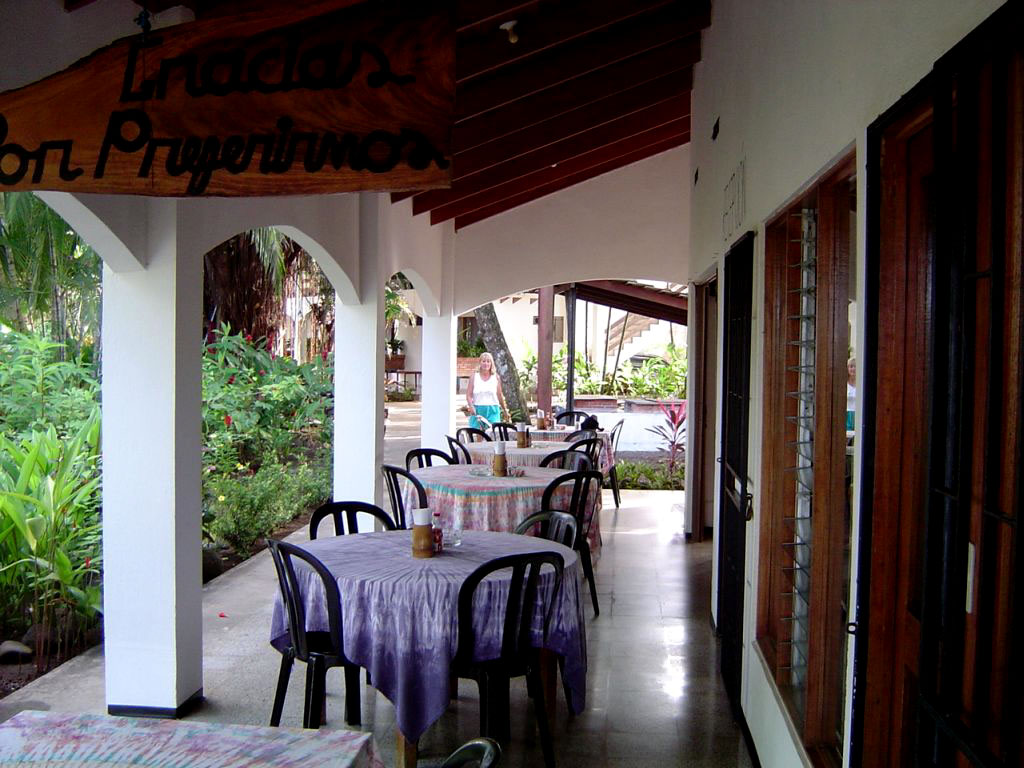
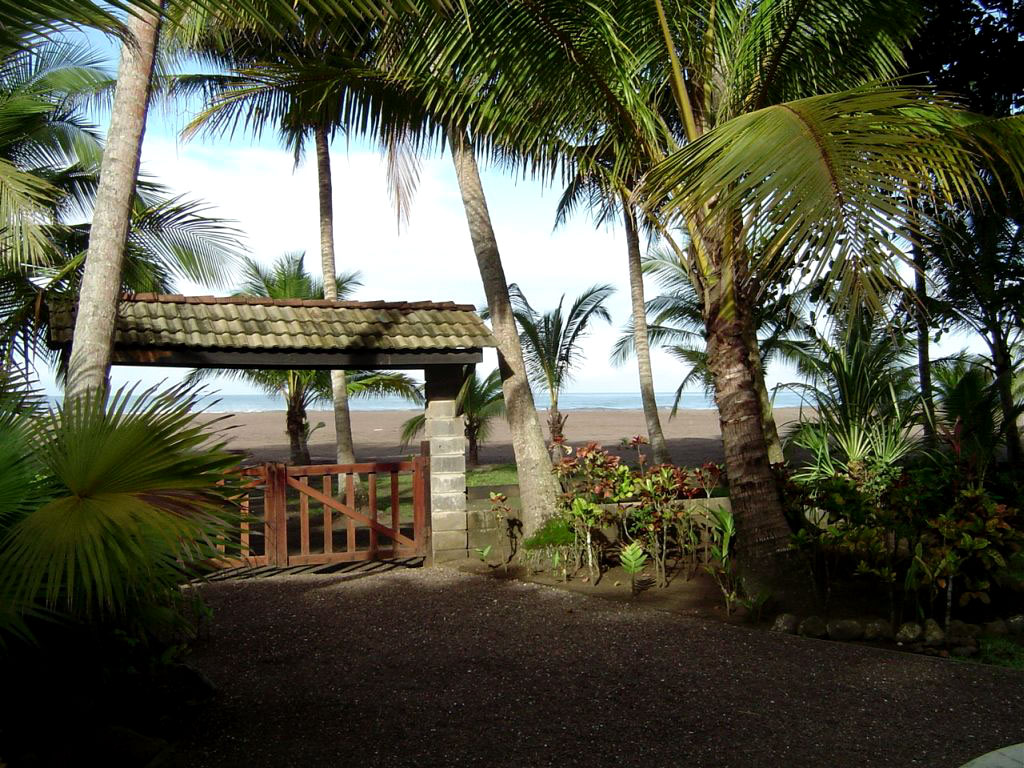
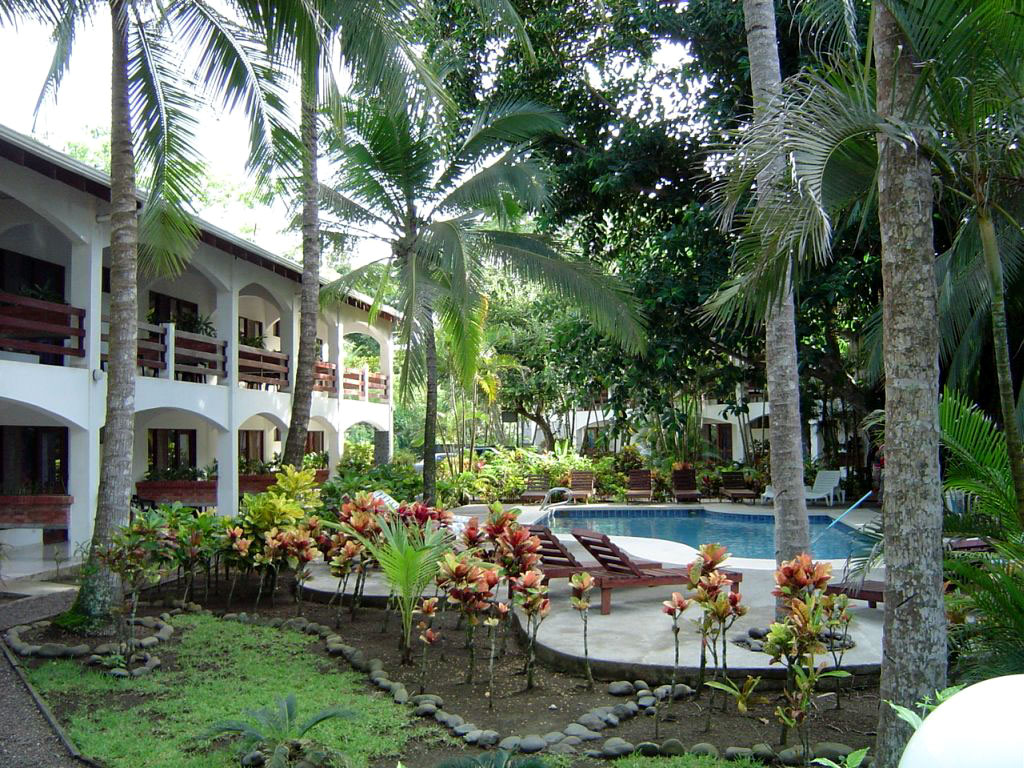
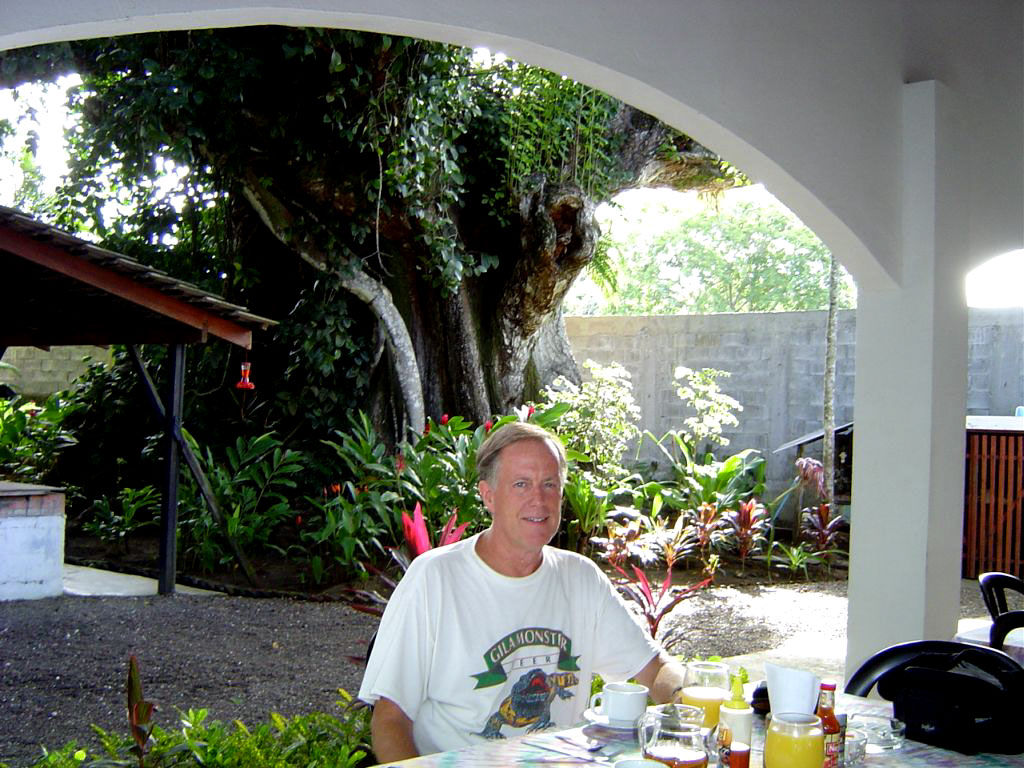
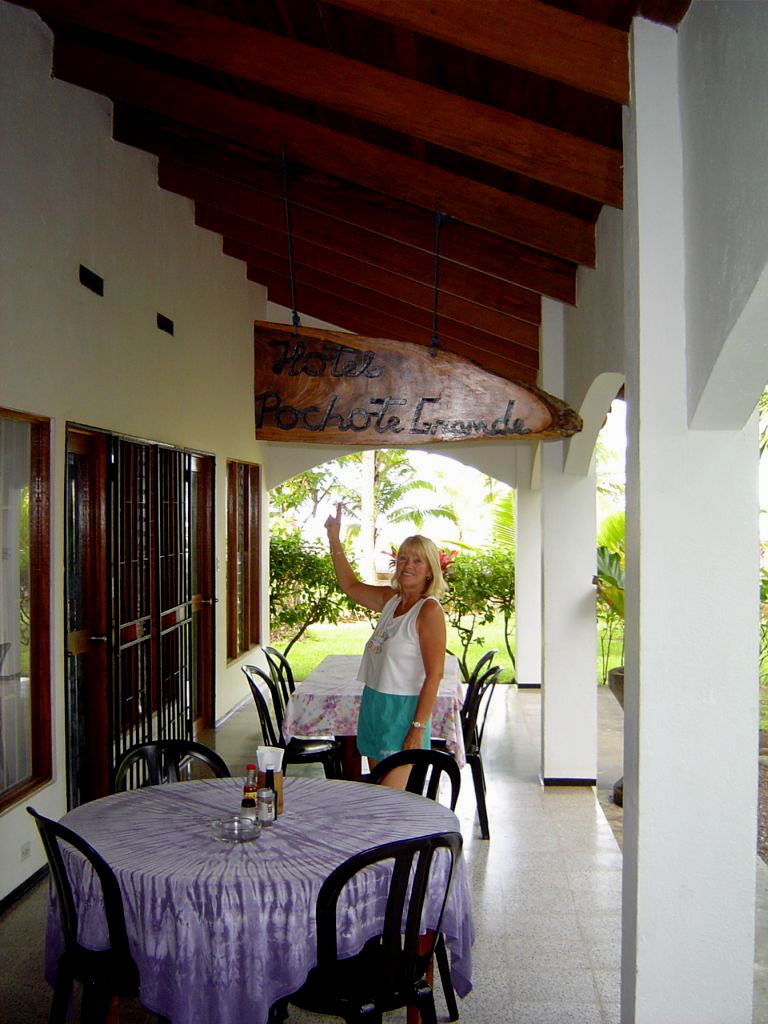
June 21st
Treated to another fine example of bad roads, the stretch between Quepos and Playa Dominica is 42 km of washboard and potholes, with washed-out bridges and detours thrown in. Five to 15 miles per hour was all I could do without having the Jeep disassemble itself. We found a few new squeaks along the way that have become permanent. It's amazing how good a bad paved road can appear after two hours on a bad un-paved road.
Our day ended at the EuroTico Inn, 20 km short of the Panama border. It seems easiest to make a run for the border in the morning before the traffic gets moving, workers get grumpy and it starts to rain.
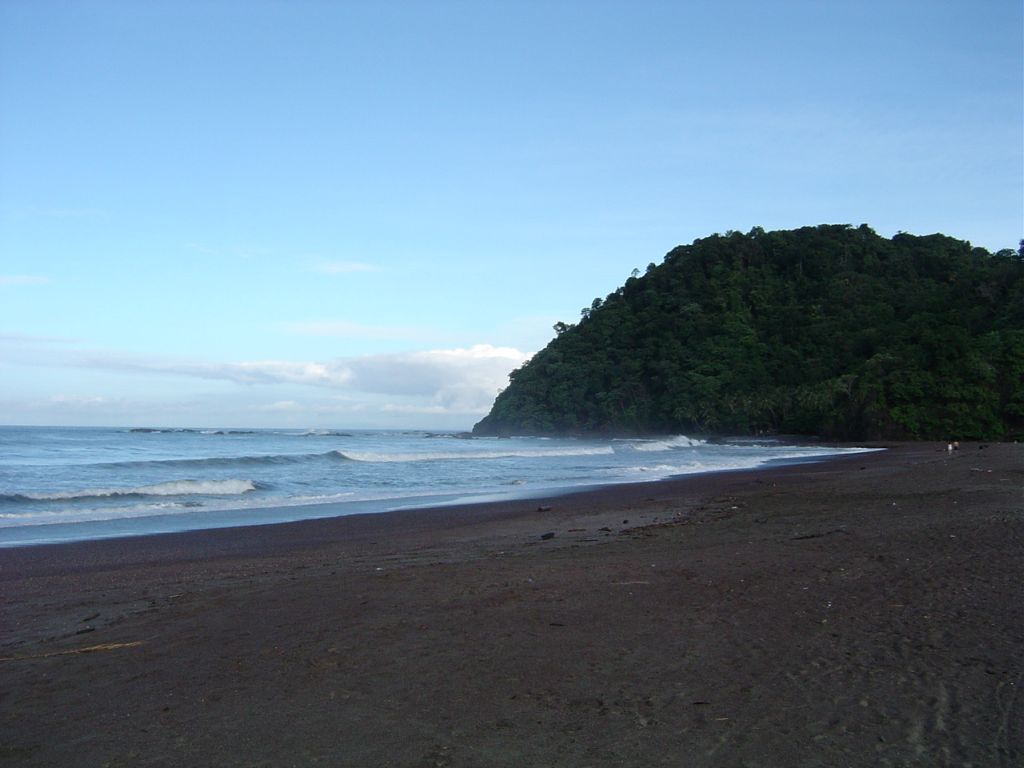
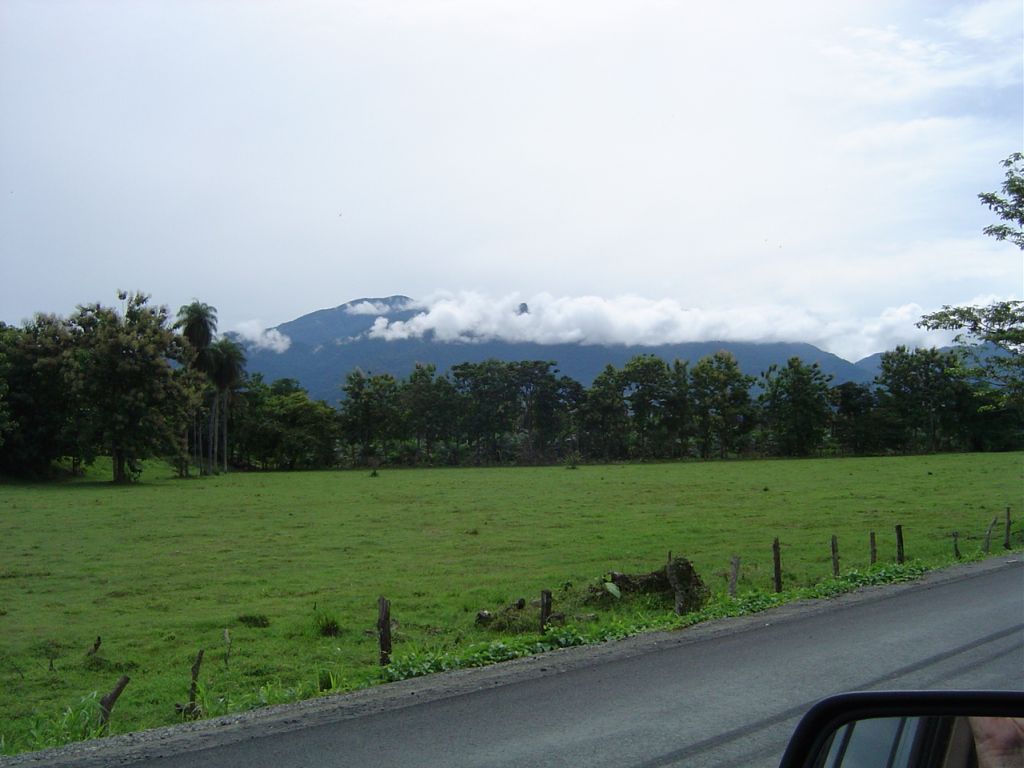
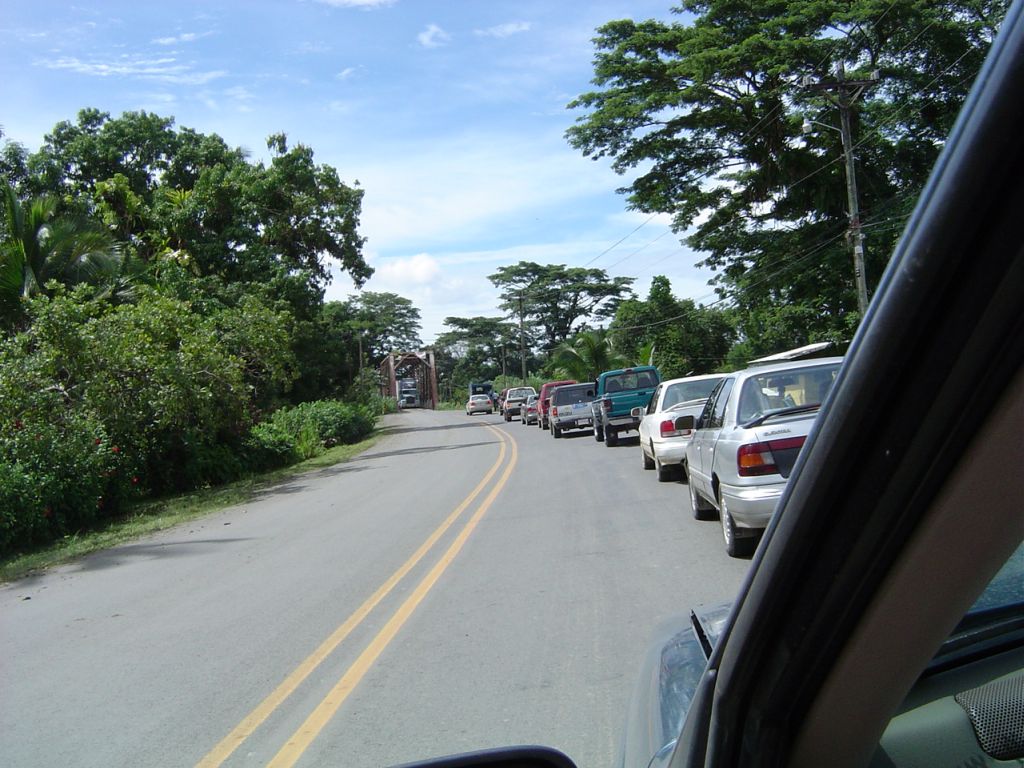
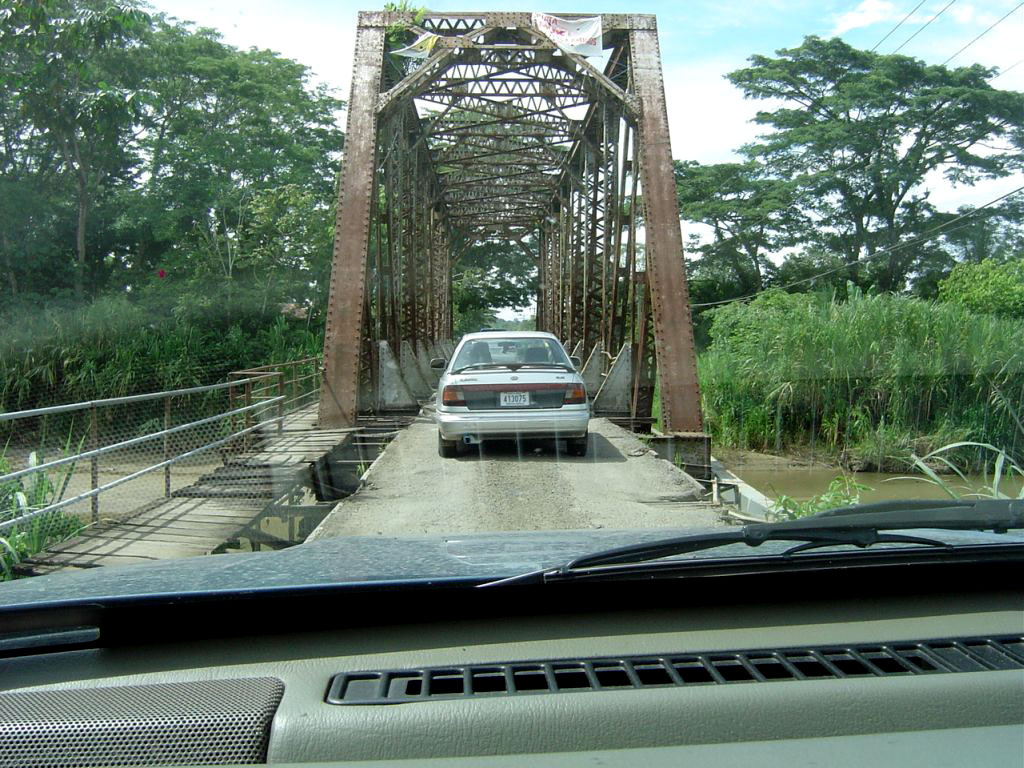
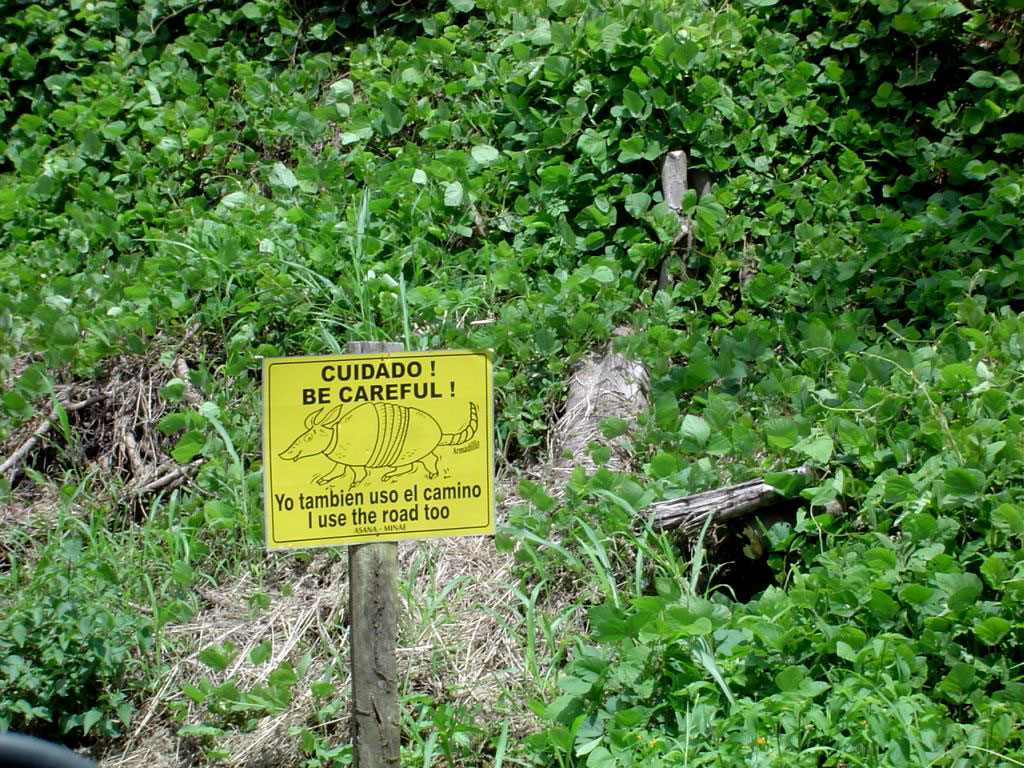
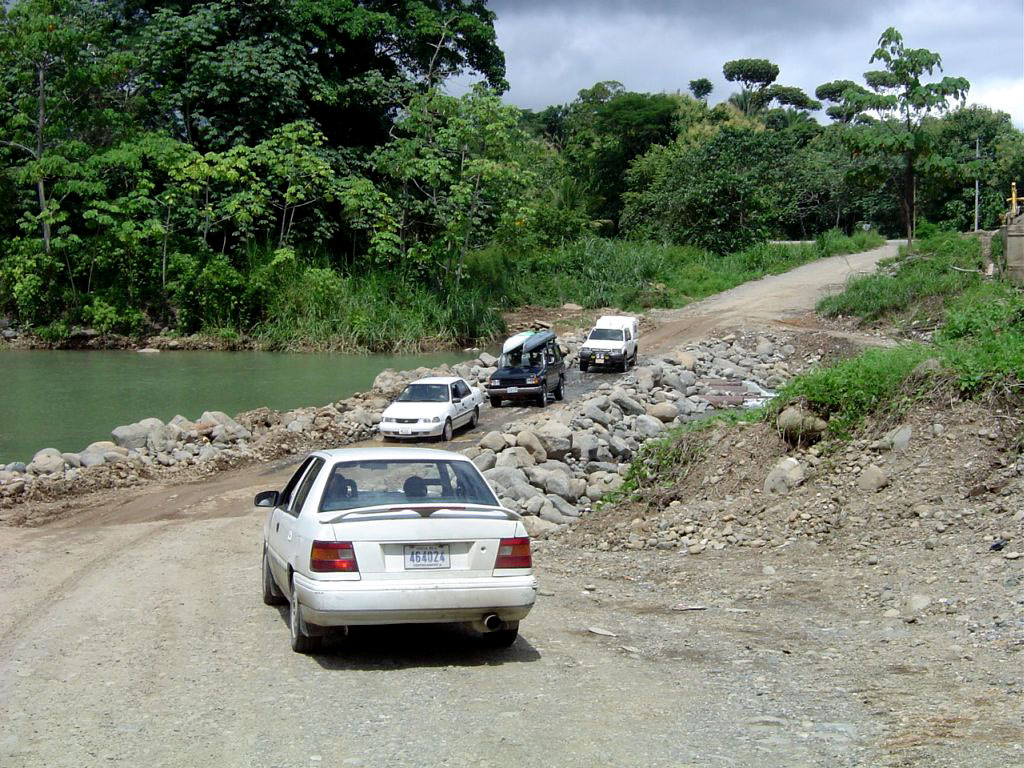
June 22nd
Miracle of miracles... the border crossing into Panama was a piece of cake, although we somehow wandered into Panama without ever seeing the exit point from Costa Rica. Border towns seem always to be a hodge-podge of truck repair shops, gas stations, fruit vendors, money changers and kids wanting to "watch your car," sometimes obscuring your objective. We were turned around by the lone "tramitadore" on his bicycle. He and his little brother guided us from one office to the next, back and forth, to a different window each time, until the dance was over. Feeling so grateful that it cost only $13.00 to get into Panama, I gave our "guide" a half-day's wages, $5.00.
Dozing again, we passed our objective for the day, the city of David, by 10 km before realizing it. It didn't take long to get back and check into the finest hotel in town, the Gran Nacional. You get a nice room for $52.00 per night. We had a huge buffet lunch for $4.50 per person before taking a 4-block walk to the city center, where we found real bargains in clothing. Elsa bought two casual "pants and top" outfits and a blouse for a total of less than $20.00.
A medium-sized pizza, with all the toppings, in the hotel restaurant was $5.00. A Panama cerveza added another dollar.
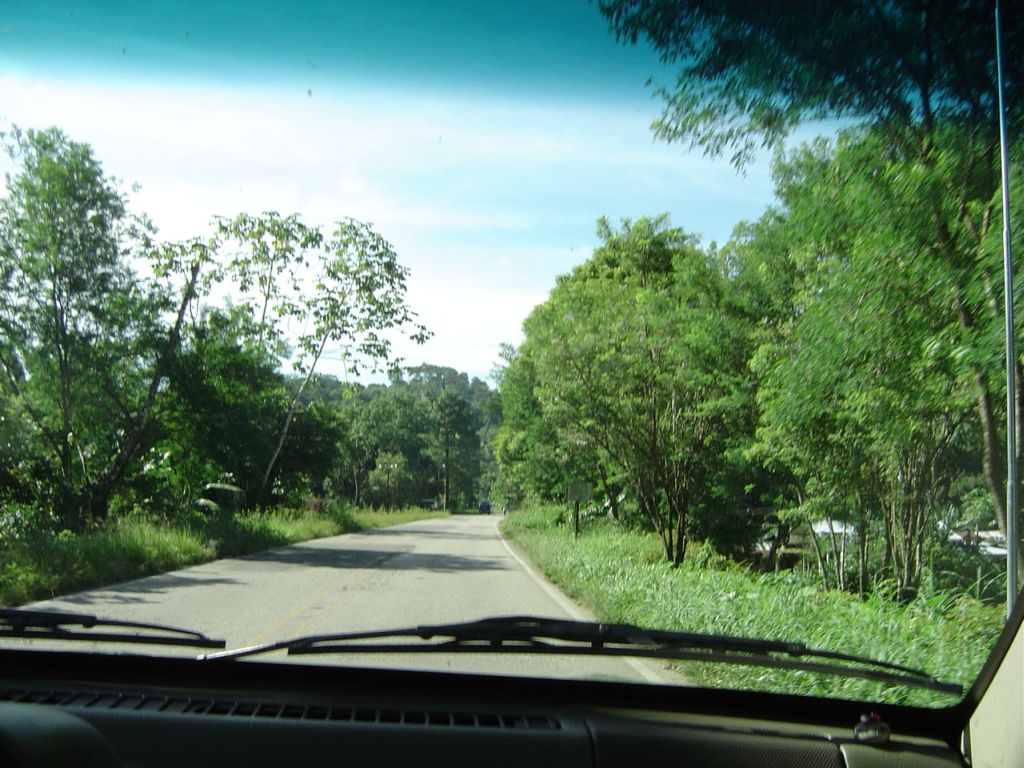
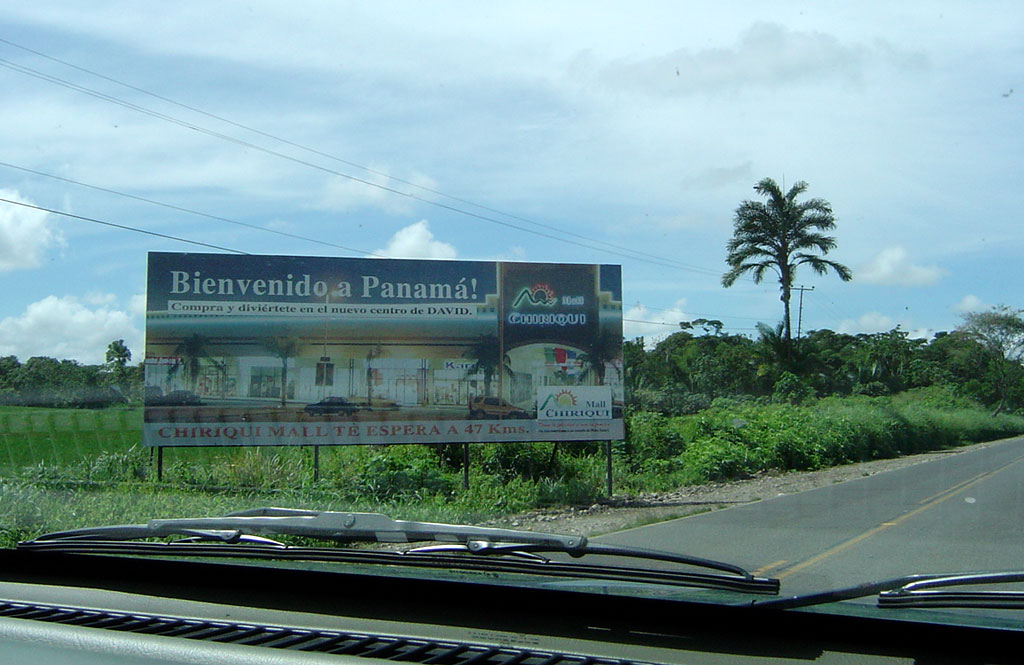
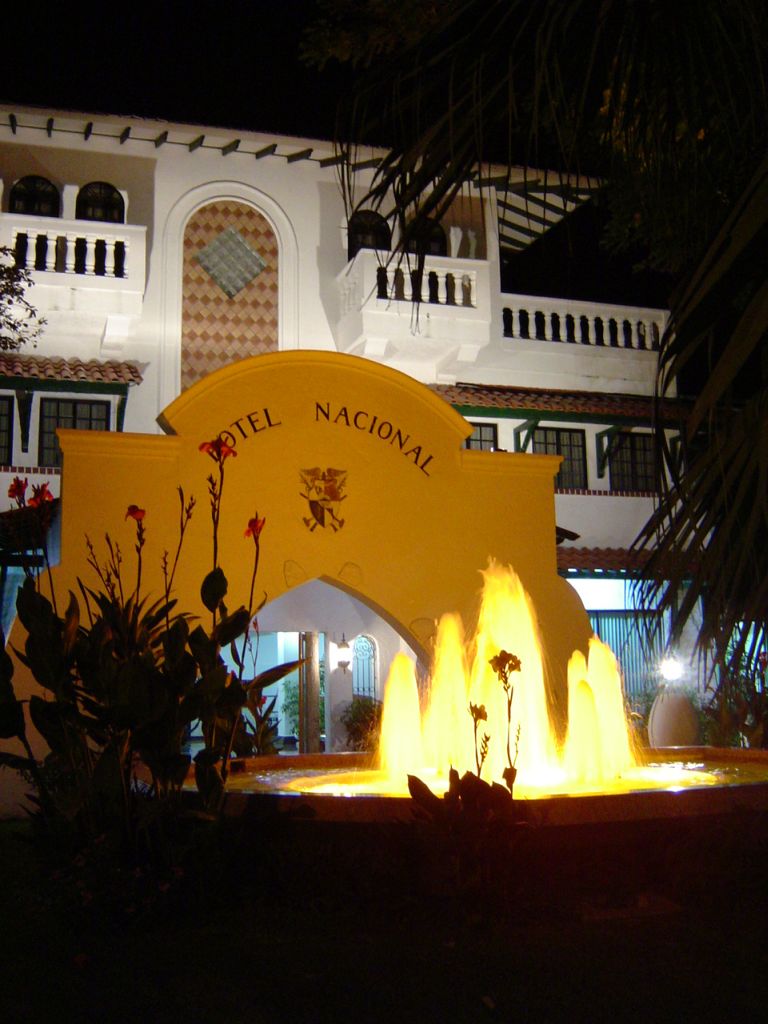
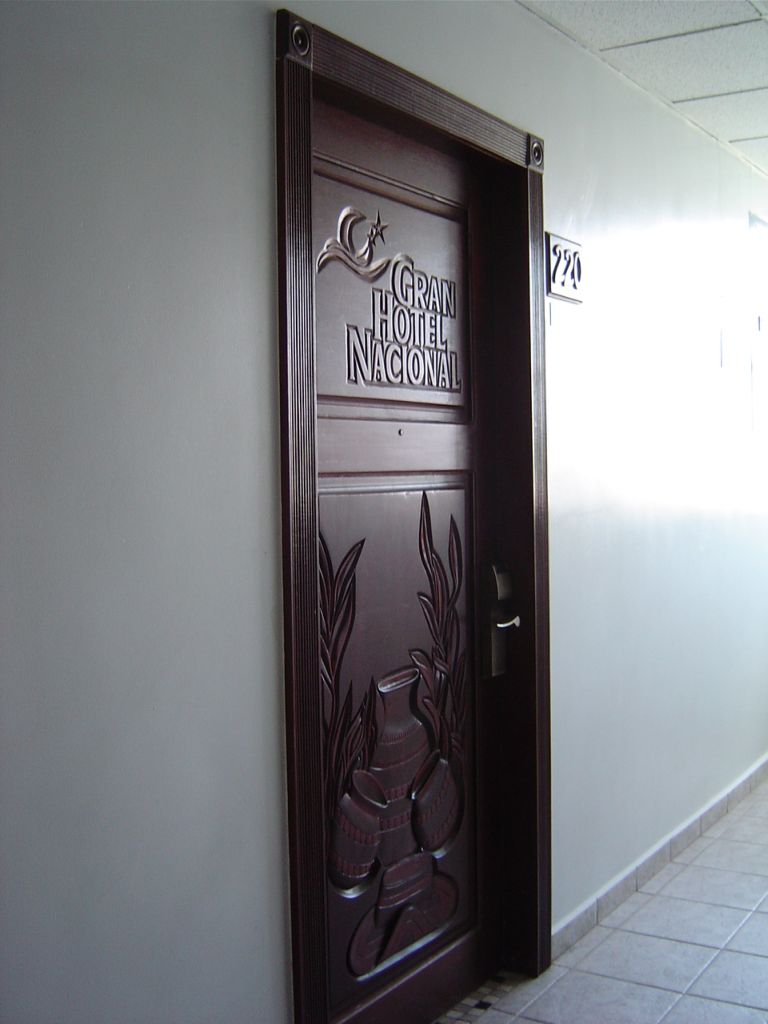
June 23rd
The hotel wouldn't let me connect my laptop in their business center (for only 6.30 per hour) so I walked two blocks down the street to an Internet "cafe" and was connected within minutes for 50 cents per hour. It was less of a cafe than a place for kids to do their homework. Actually, it appeared that the boys were playing games and listening to music and the girls were writing papers and doing spreadsheets. All 50 seats were occupied.
I discovered a file on the Internet, written by a fellow ham-radio operator, who described the city of Volcan as the ideal place to retire. Numerous calls to his phone number yielded nothing, so we elected to do a drive-by. The place is a lot like what Big Bear, in Southern California, must have been like 20 years ago. The town consisted of small stores lining both sides of the road for a distance of a half mile, the view dominated to the east by Panama's highest point, Volcan Baru.
Boquette on the other side of the volcano is rated by AARP as their 4th most desirable place for people to retire. It's a pleasant little city, nestled in a valley, dominated to the west by the same Volcan Baru. A 500 unit development, Valle Escondido, within walking distance of the center of town adds a comical touch; one could be there and never know they were in Panama. The buildings have been "antiqued" with the same paint techniques used at Disneyland. Charging a dollar per person to enter the property completes the theme-park atmosphere.
June 24th
The road north from David passes through Panama's most scenic area. The road rises slowly, giving vistas of all shades of green stretching to the ocean to the south and the cloud-shrouded volcanos to the north. We crossed the Continental Divide at 1100 meters and started down the north slope to the Caribbean coast. The city of Chirique Grande can be visited in 15 minutes or less. There are a few stores, the fronts of which open wide to the street. The goods are staples: huge sacks of rice, medium sacks of rice and small sacks of rice. And of course cell-phones. There is no end to the market for phones, chargers, fancy faceplates and belt clips.
We abandoned our plan to stay the night since the two hotels in town appeared to have seen their last paint-job about 50 years ago. The parking lot of one was full of rocks, piled high for some concrete mixing job long forgotten. The other had no parking at all. Visions of waking to find a Jeep without wheels danced through my head.
To make matters worse, I elected to continue on a bit farther north up the coast to Altimira, gateway to Bocas Island, headquarters of the Carribean Island boat tours. The drive wound through a tropical forest for 60 km before dumping us in another town like the last, but much less appealing. Kids on bicycles swarmed the car, each one trying to out-shout the next in an attempt to earn a dollar or two for guiding us to the dock. Listening to them argue, while a train blocked our path, tried Elsa's patience, ever-thin, so we turned around and started back without setting foot on the ground.
It rained most of the way back, making the atmosphere even more gloomy than it might otherwise have been. The Gran Nacional was surprised, but happy, to see us again. Their swimming pool was huge, warm and very relaxing after another full day in the car.
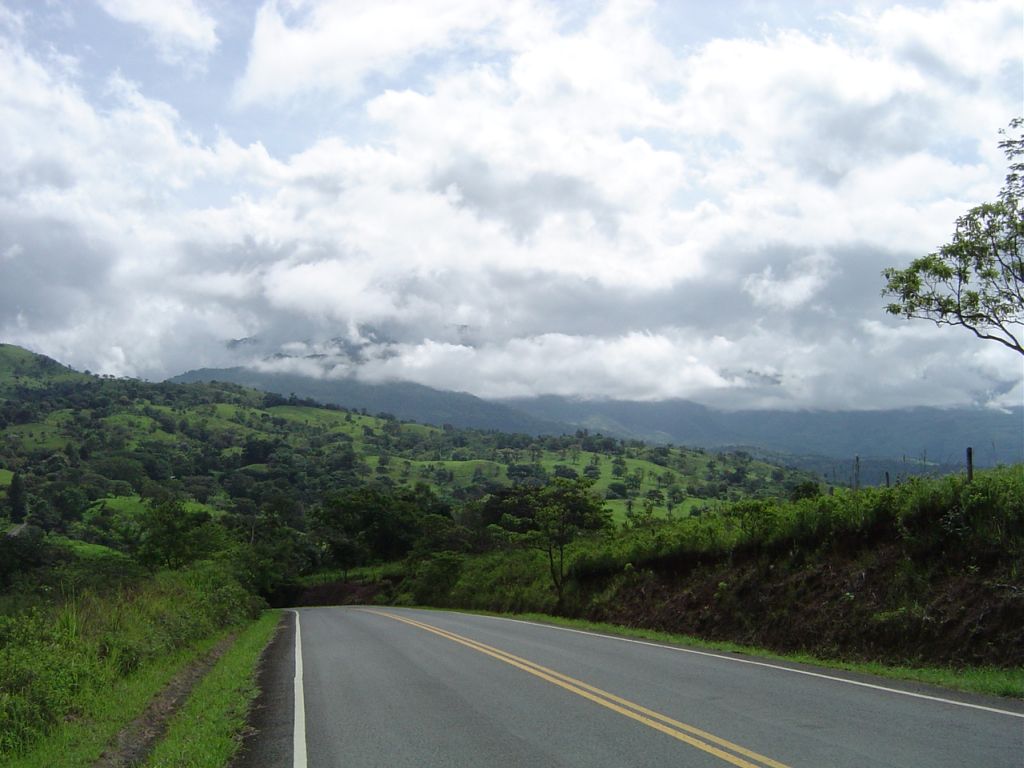
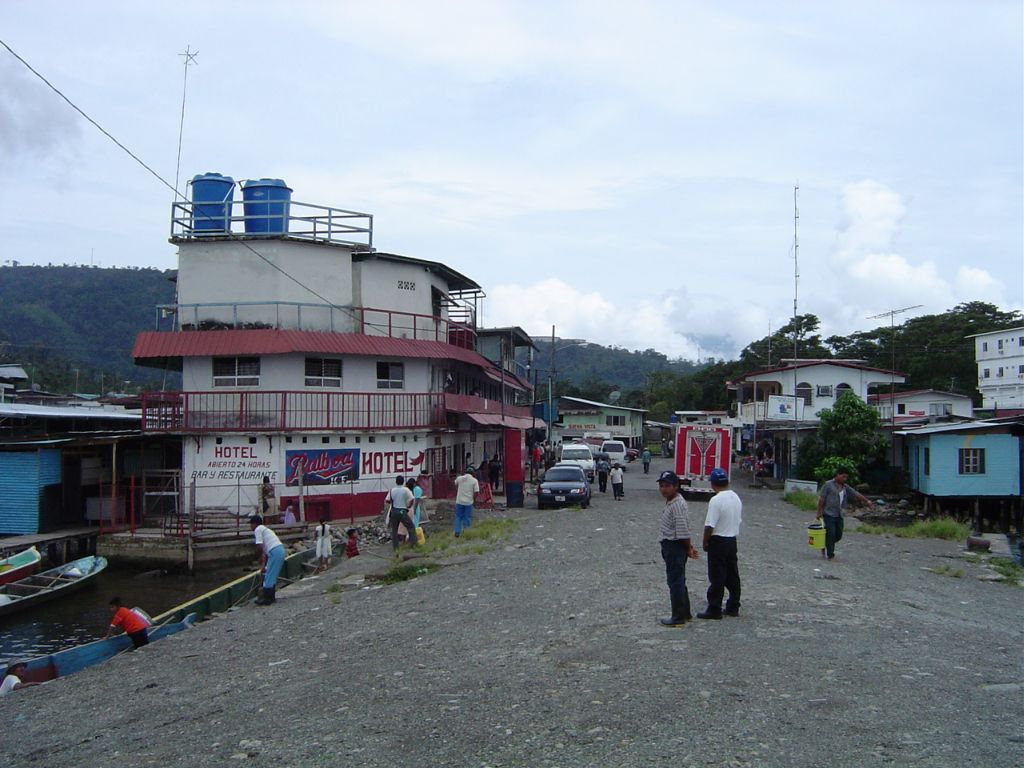
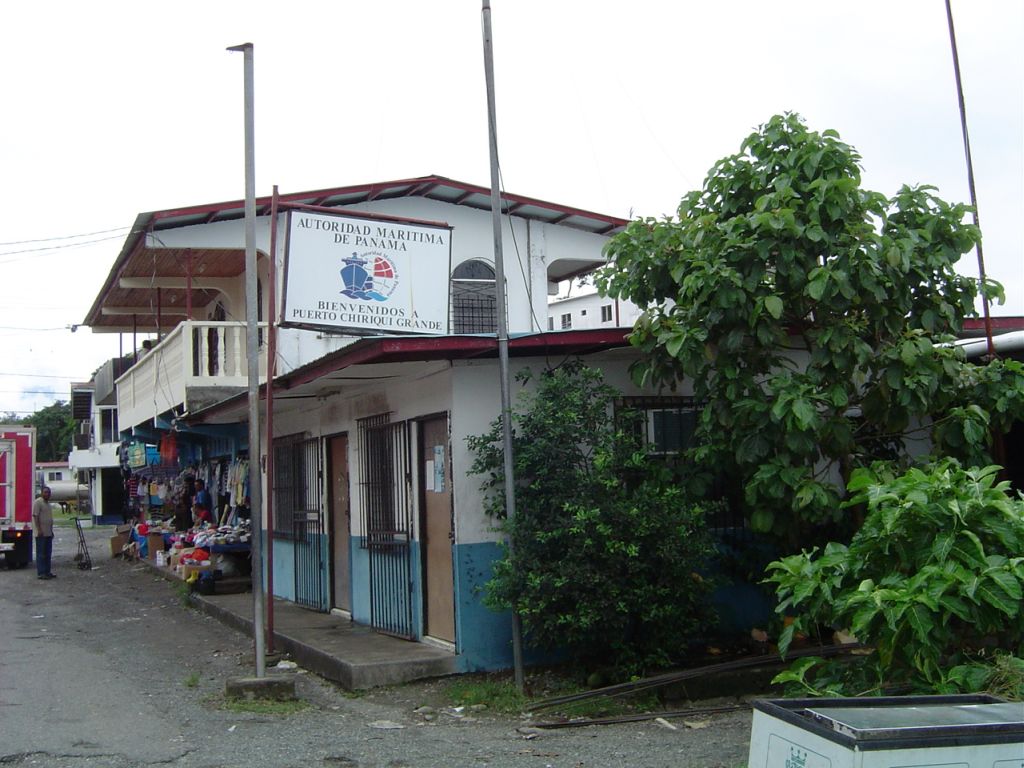
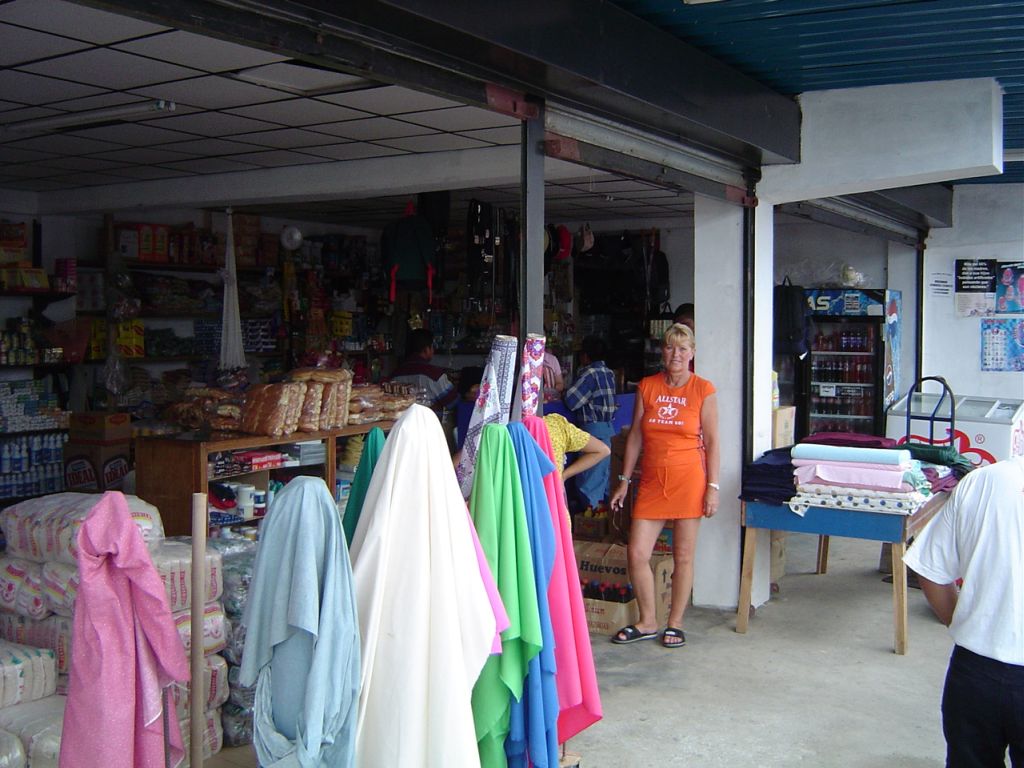
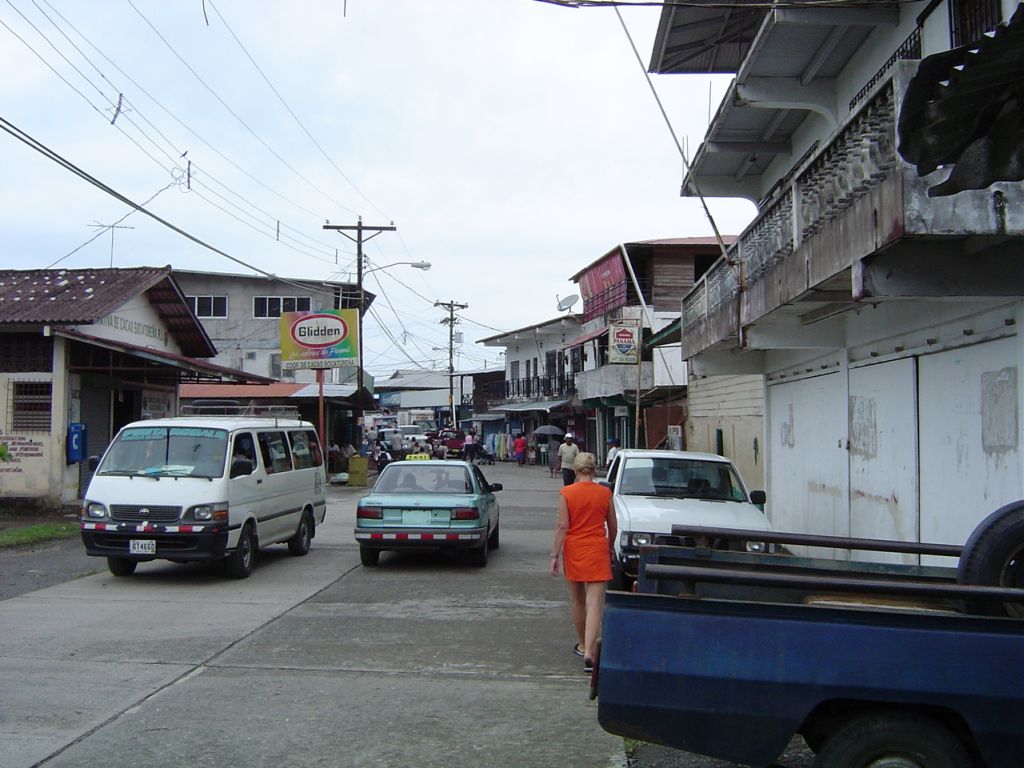
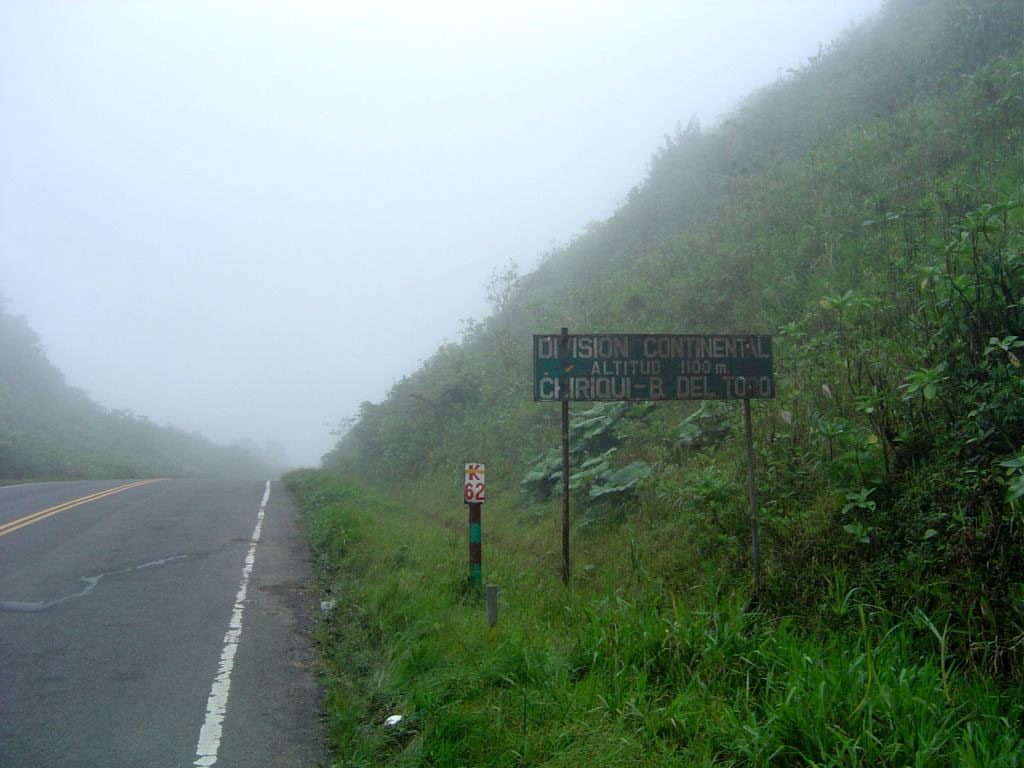
June 25th
Panama City is a 6-hour drive from David. The road has been upgraded to a 4-lane divided highway for more than half of the trip, so it was an easy run. We drove over the Bridge of the Americas, crossing the southern entrance to the Panama Canal, and into Panama City about 3:00 PM, completing Part One of our adventure, racking up 8,000 miles (12,500 km) in ten weeks.
We booked into the Executive Hotel right in the middle of the city, on the advice of folks we met along the way. Our room is on the 12th floor, with a good view of the city and the ocean, free Internet access, free Happy Hour from 6 to 7, for $40 per night, breakfast included.
Panama is getting top marks so far; a beautiful country, good roads, cheap food and lodging, and pleasant folks to deal with. Guatemala is a close second. Costa Rica, once thought to be in first place, is no better than third.
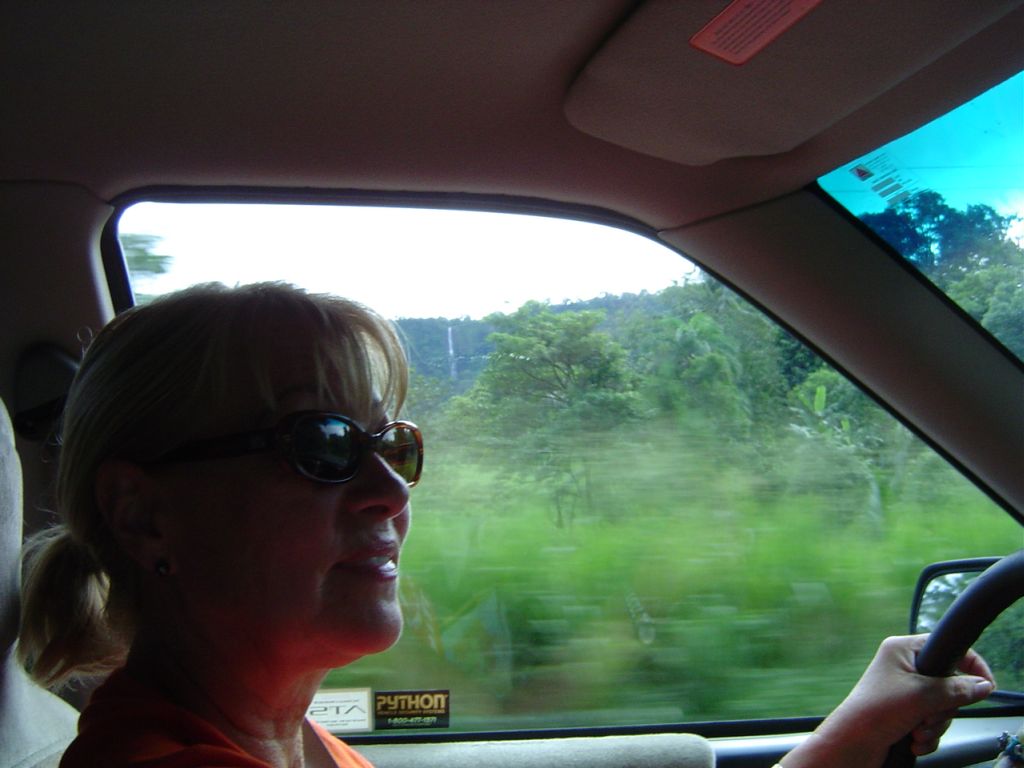
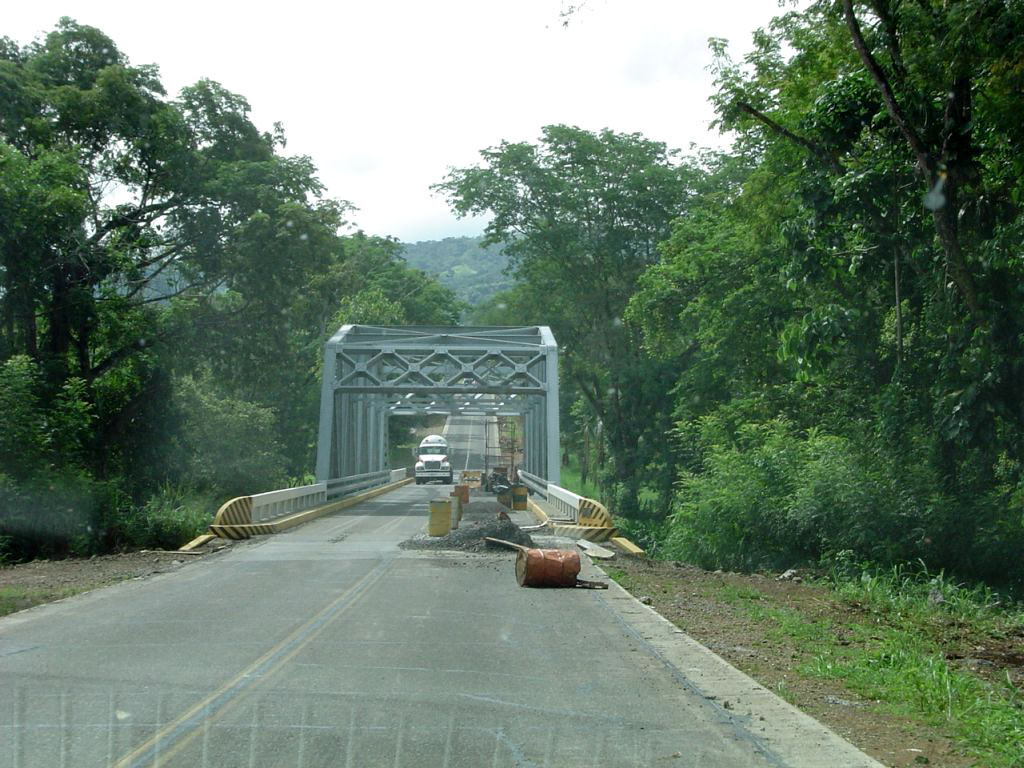
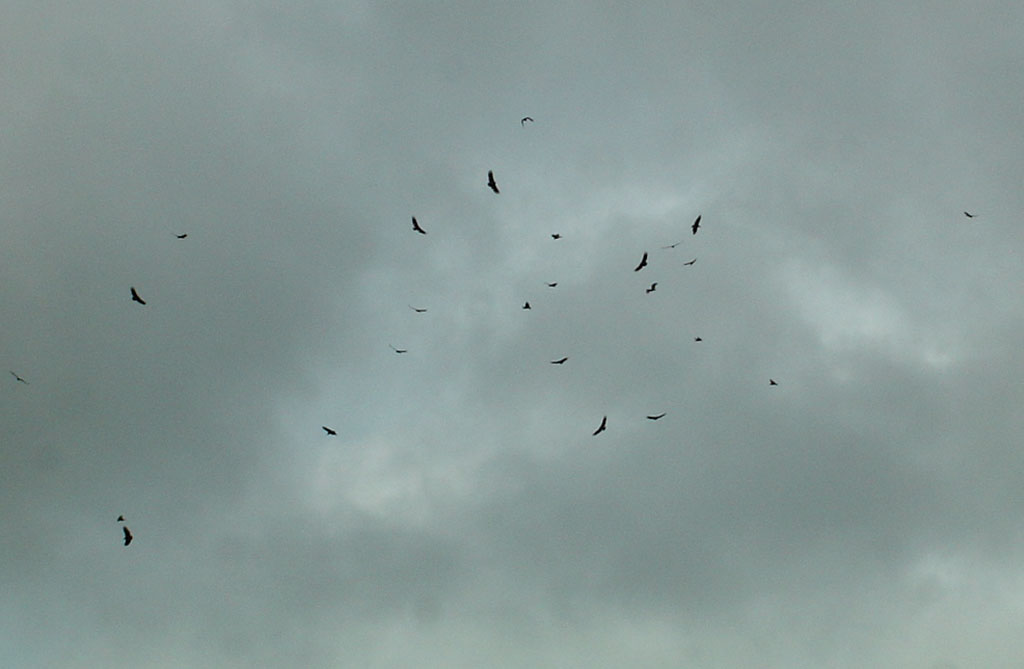
Vultures patrol the roads, looking for unlucky drivers
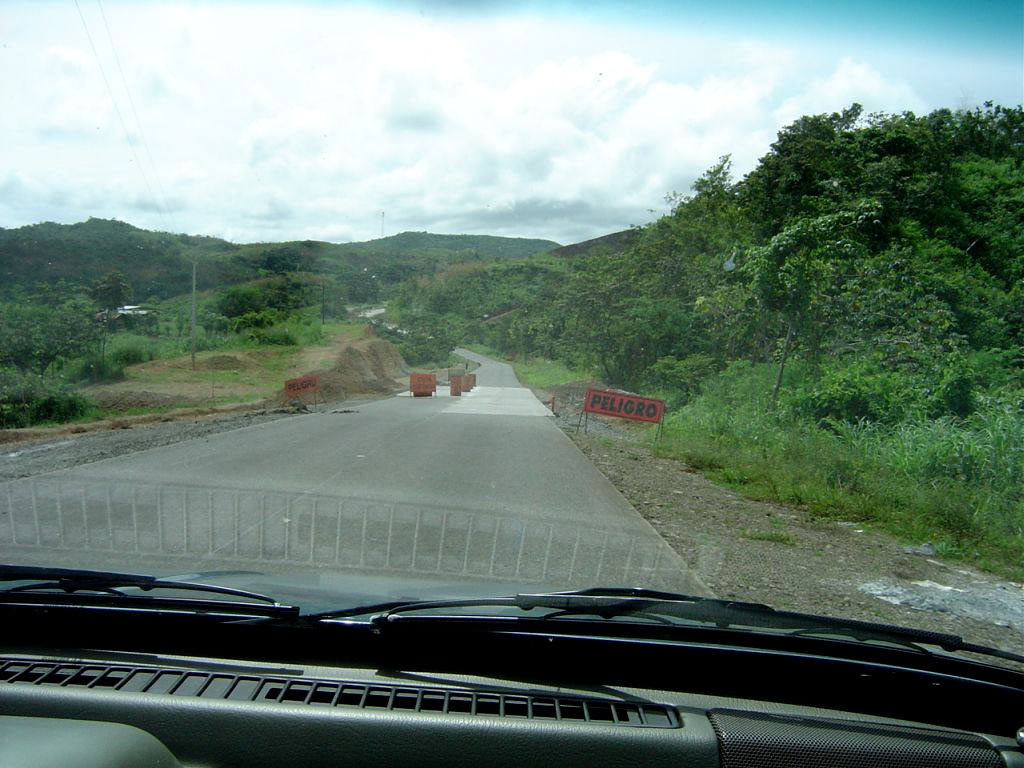
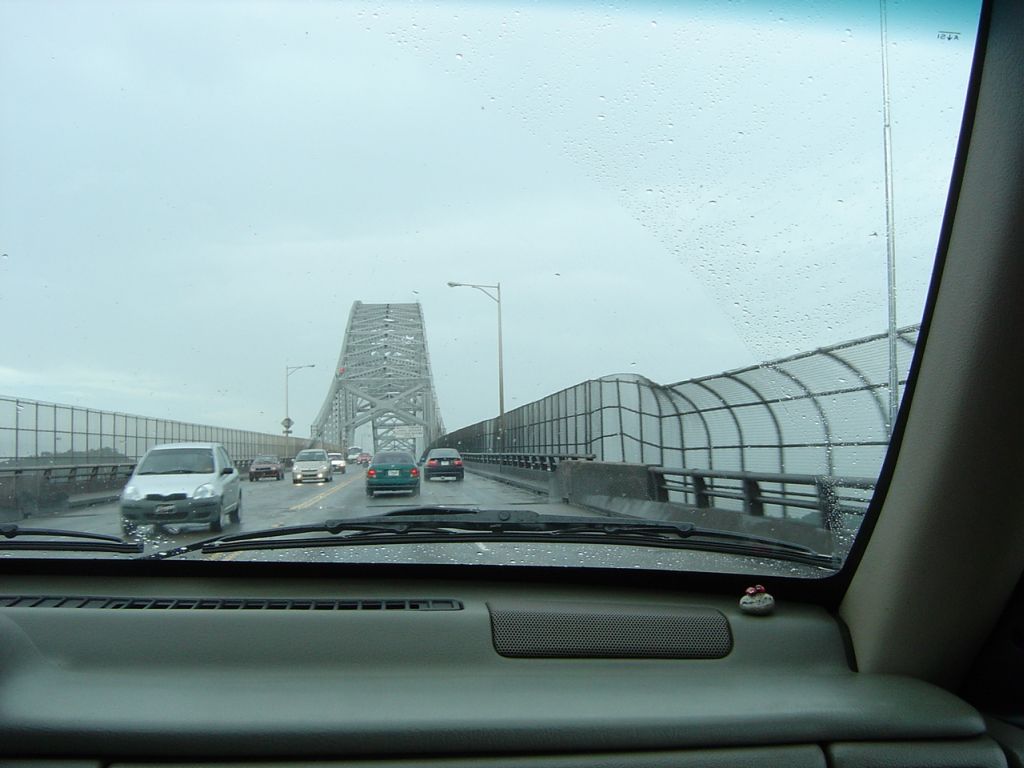
The Bridge of the Americas
Panama City, Panama
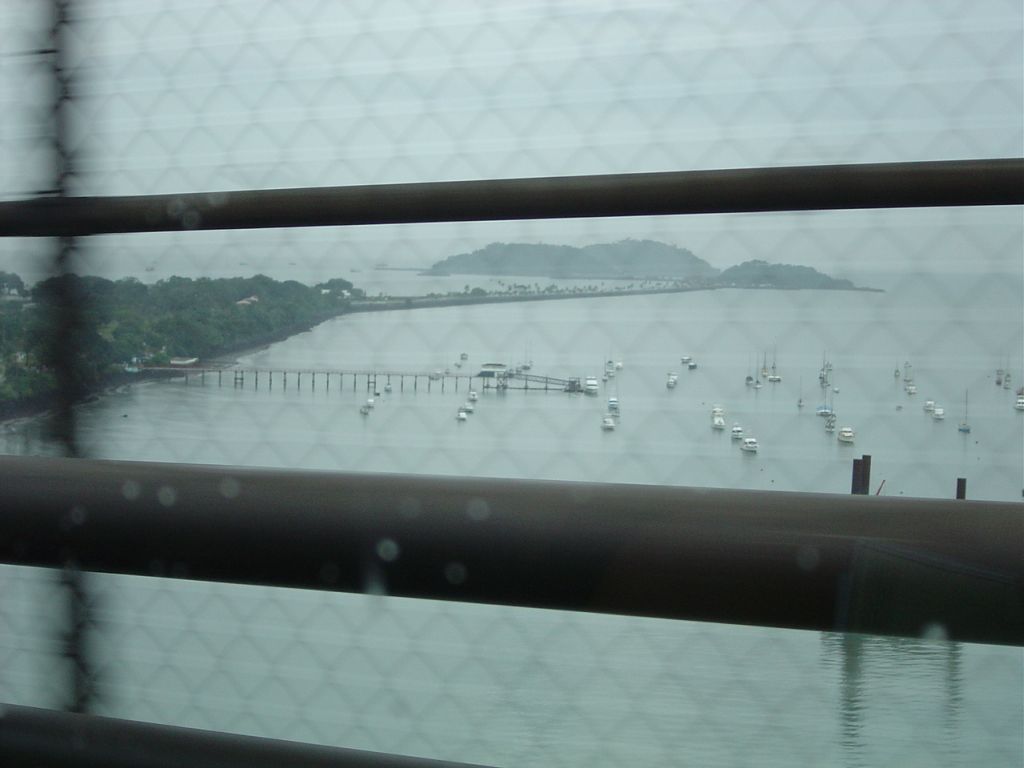
Amador Causeway and Flamenco Island, from the Bridge of the Americas
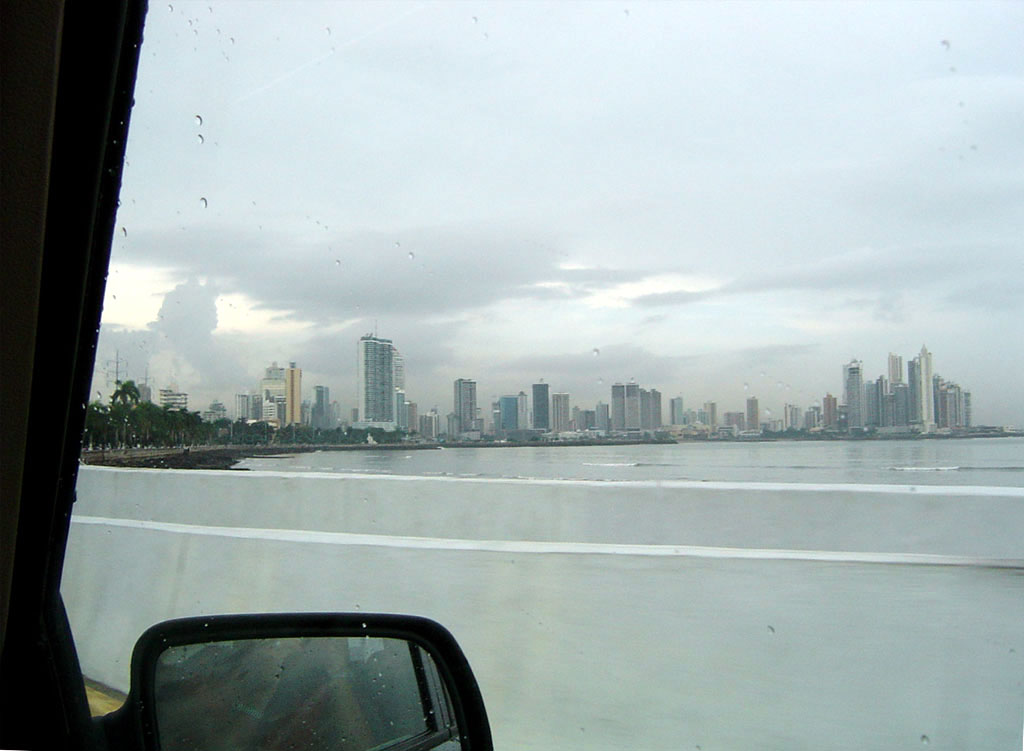
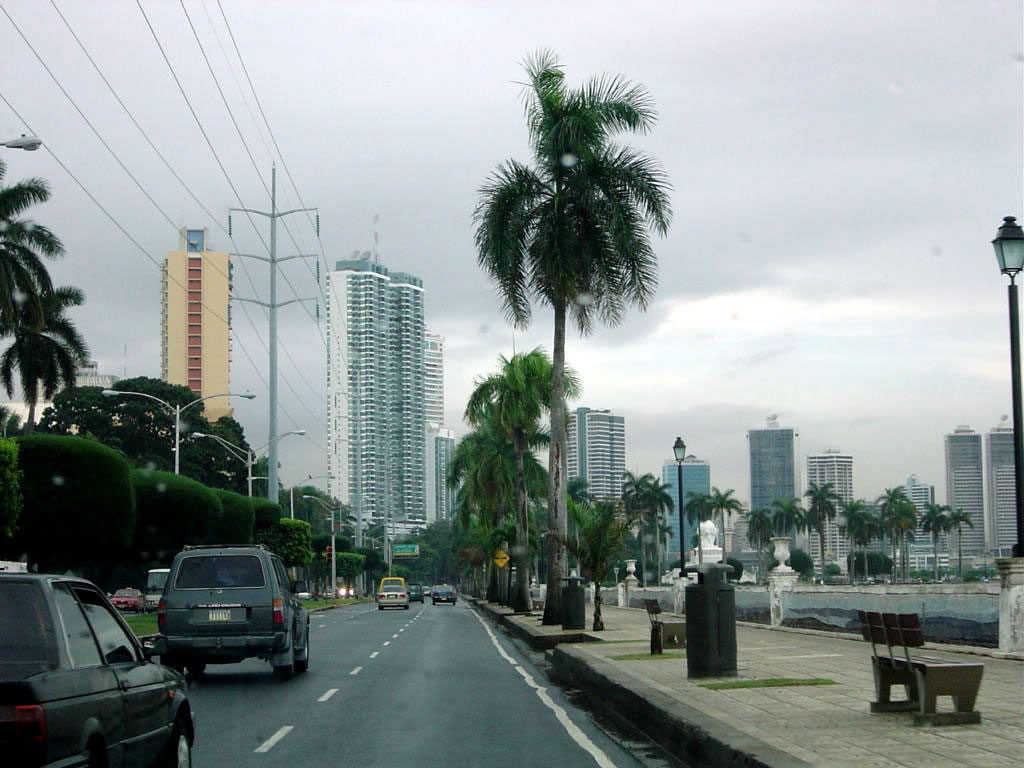
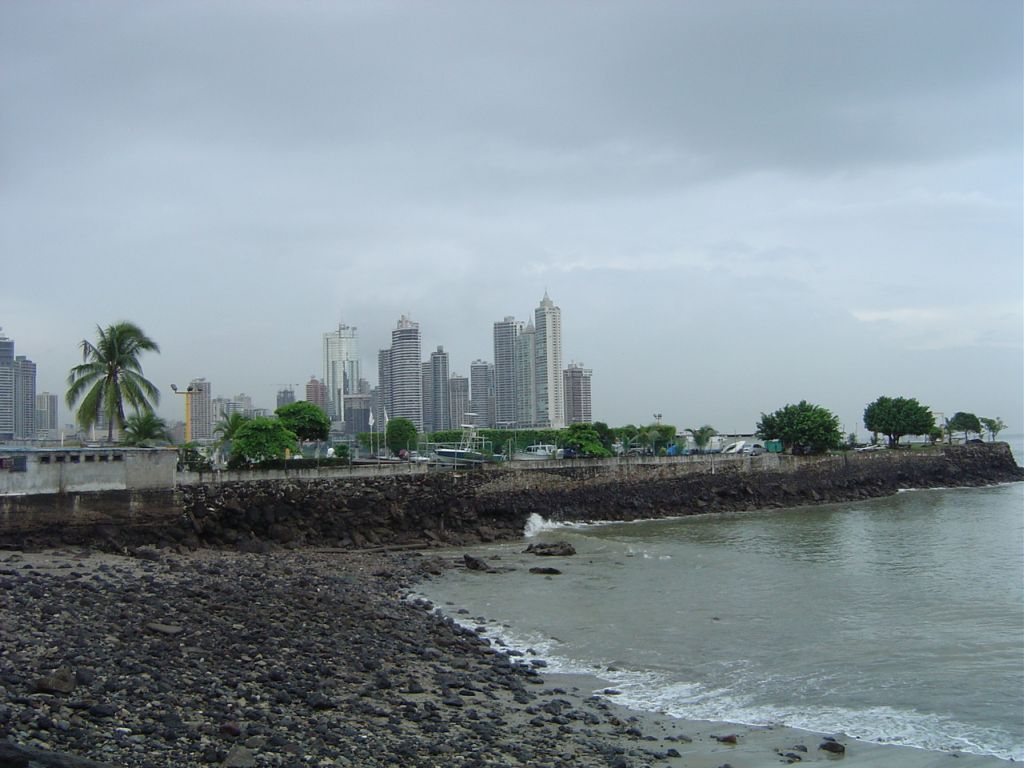
June 26th
Nothing much happens on Saturday in Panama City. We drove to the Balboa Yacht Club, under the Bridge of the Americas, where I docked three years ago on a trip from Tahiti to Miami on a 44 foot sailboat, hoping to find someone who could might offer a ride through the canal in exchange for my services as a line-handler. No luck... most of the little boats have passed through for this season. Put up a notice on the bulletin board, just in case.
The radio station one must contact before entering the canal area is located on Flamenco Island, a few miles to the south. Thinking they might know of boats needing a line-handler, we drove to the base of the hill where the station was located. Due to a shift-change, the chain blocking the entrance was down, so up we went, figuring it's better to beg for forgiveness, than to ask for permission. Naturally, we were met at the top by armed guards. They accepted our story and invited us in for a visit, but gave me another zero on the line-handlers job.
The Miraflores Lock is the first lock on the southern end of the Panama canal. An all-new visitor center has been constructed since I was here last, providing much improved viewing from the 4th floor observation deck. A car-carrier, with 3500 vehicles aboard, was gently eased into the lock and 4 electric locomotives kept it centered in the chamber. It dropped 27 feet before our eyes as millions of gallons of water were released from the lock.
One tends to think of the canal as running east and west as it crosses the country. It actually runs to the north-west as one passes from the Pacific to the Atlantic.
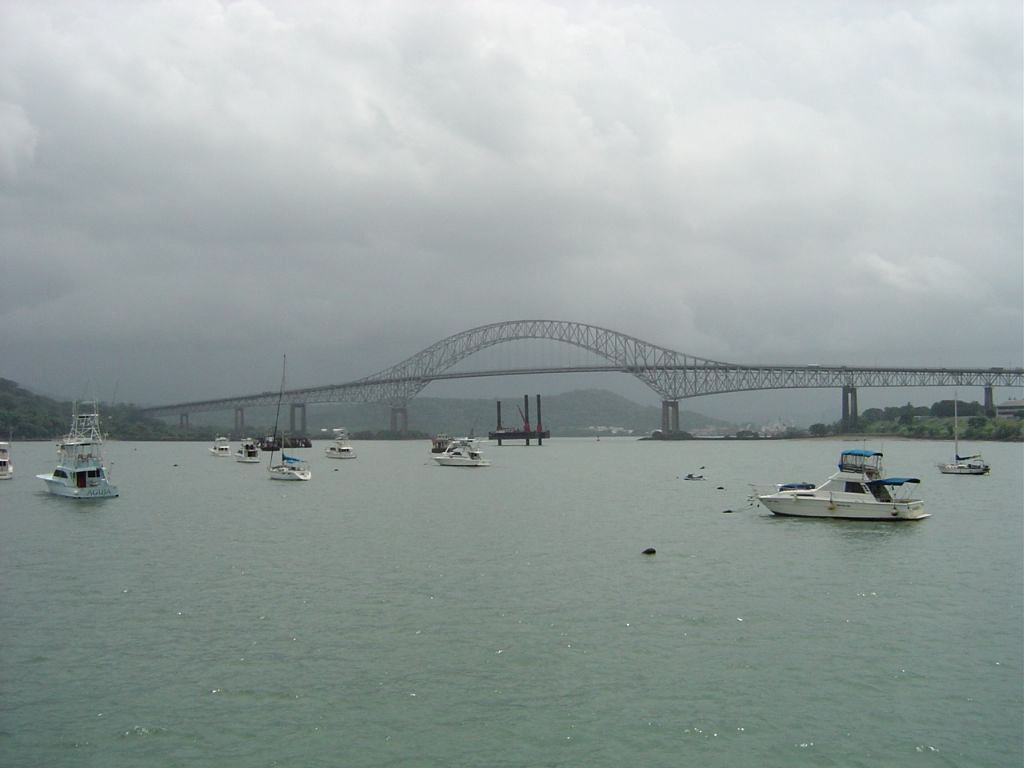
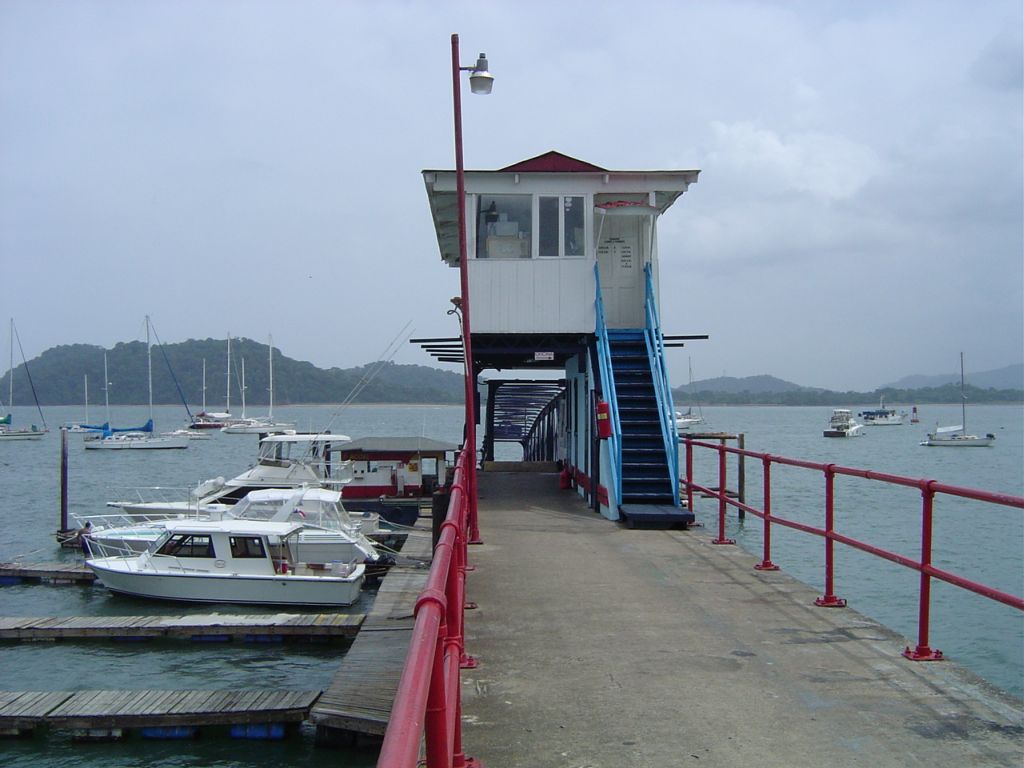
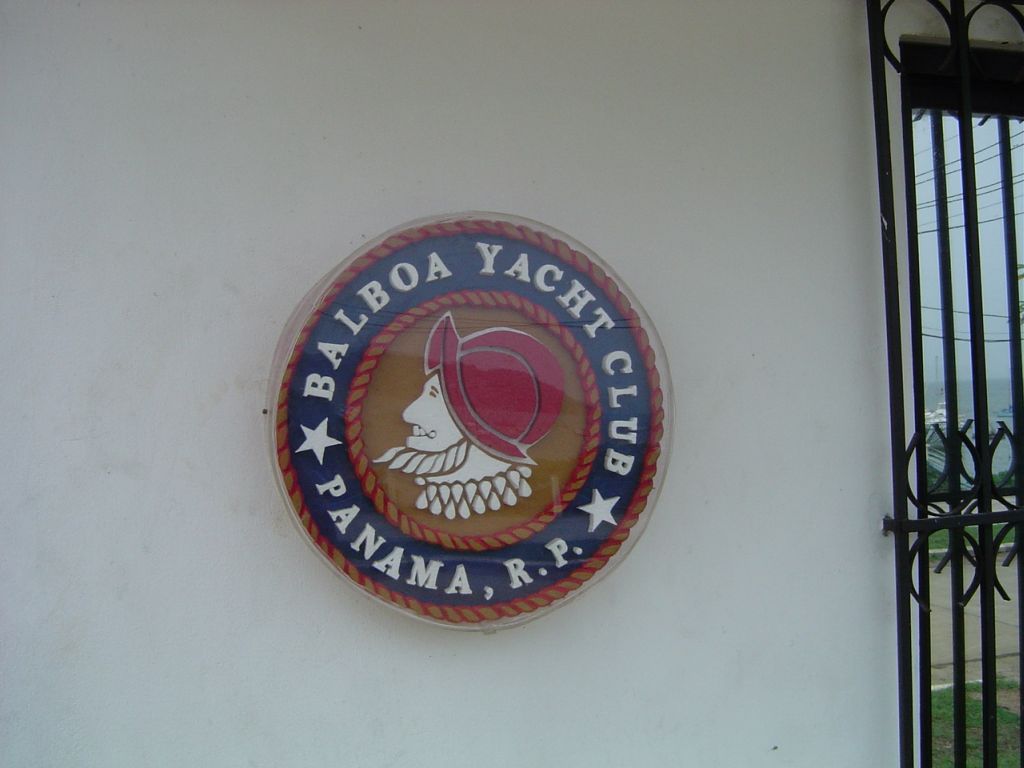
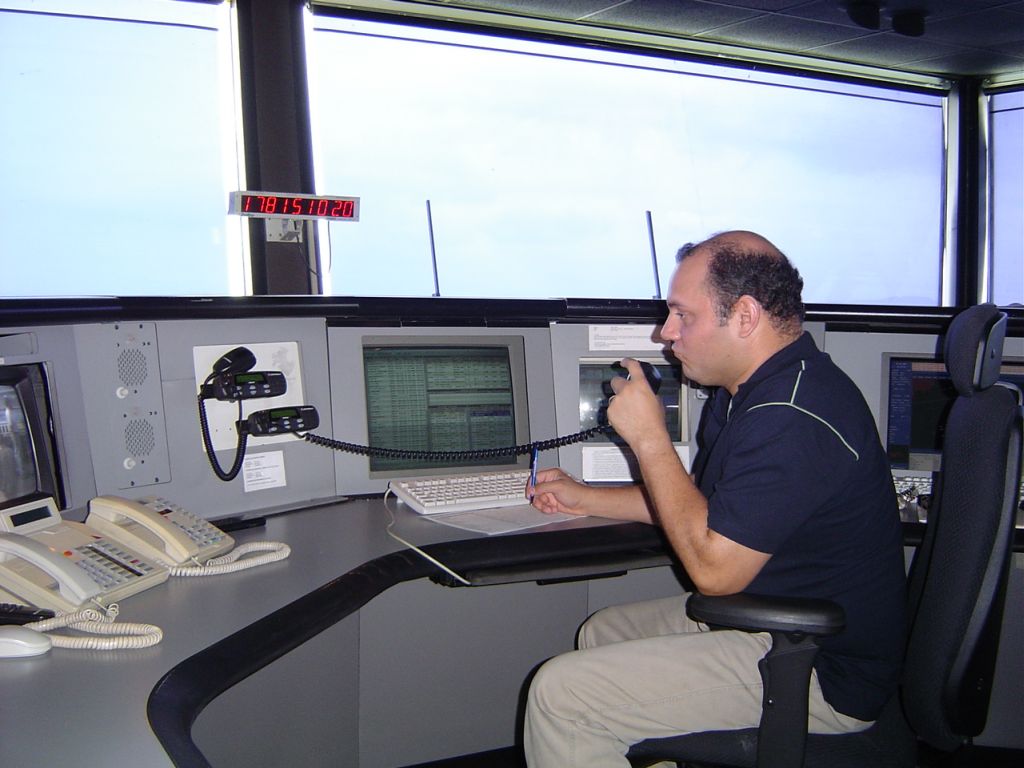
Flamenco Control, sequencing entry of ships into the Panama Canal
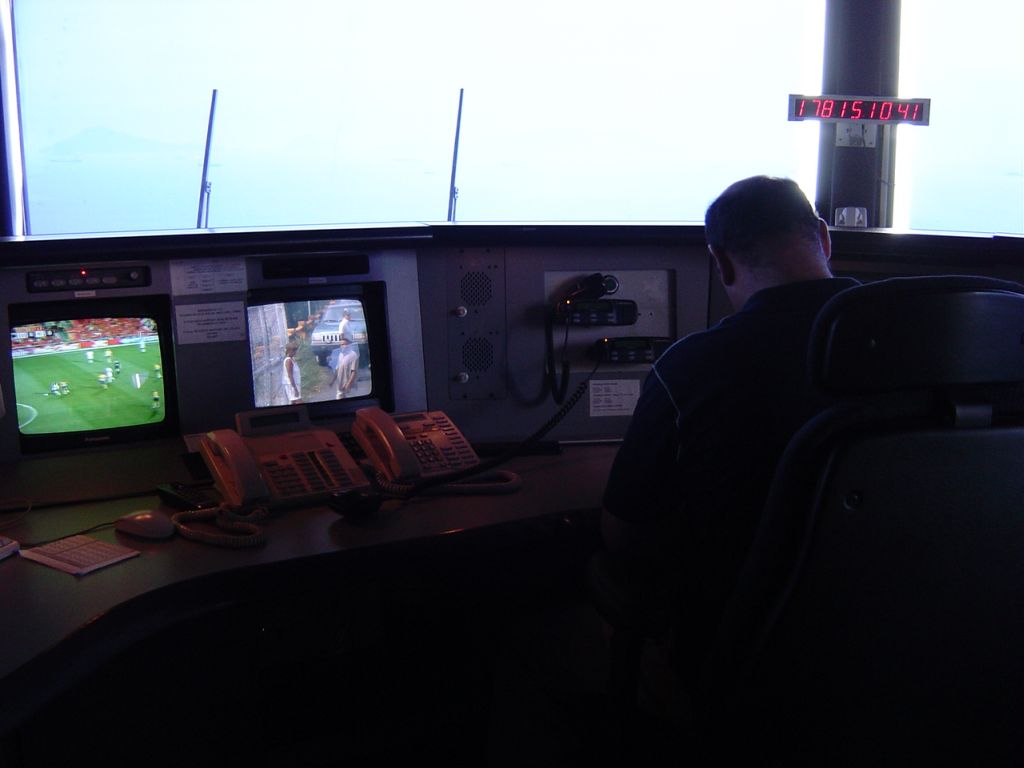
Look who is on the security camera
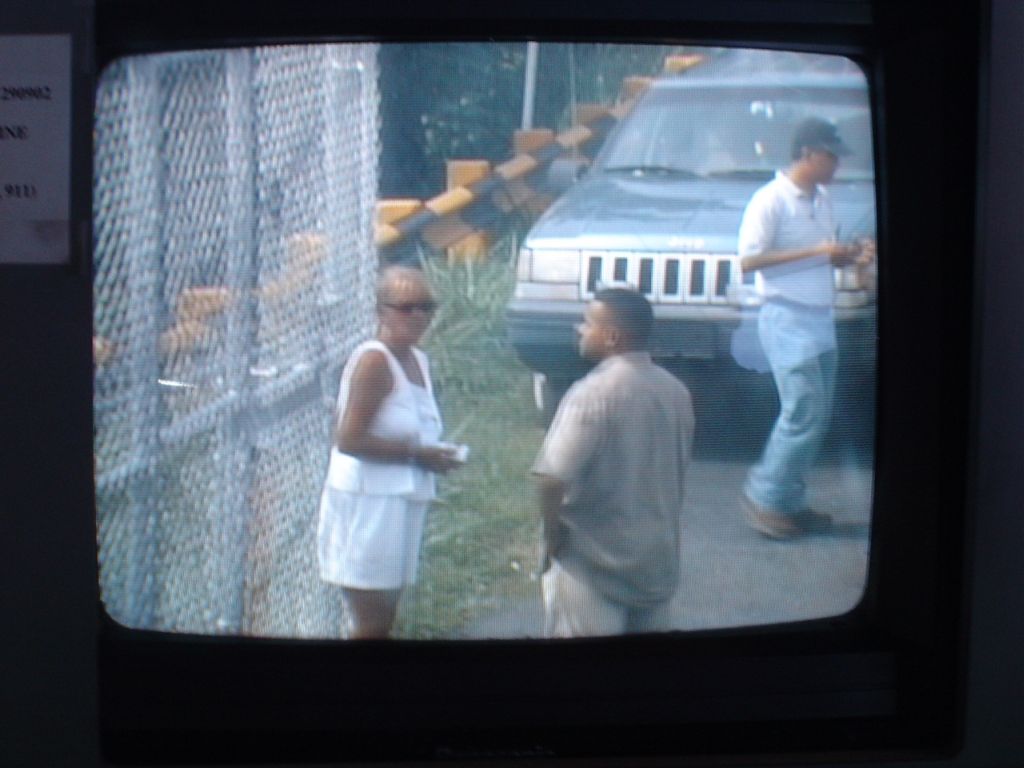
Lady Elsita
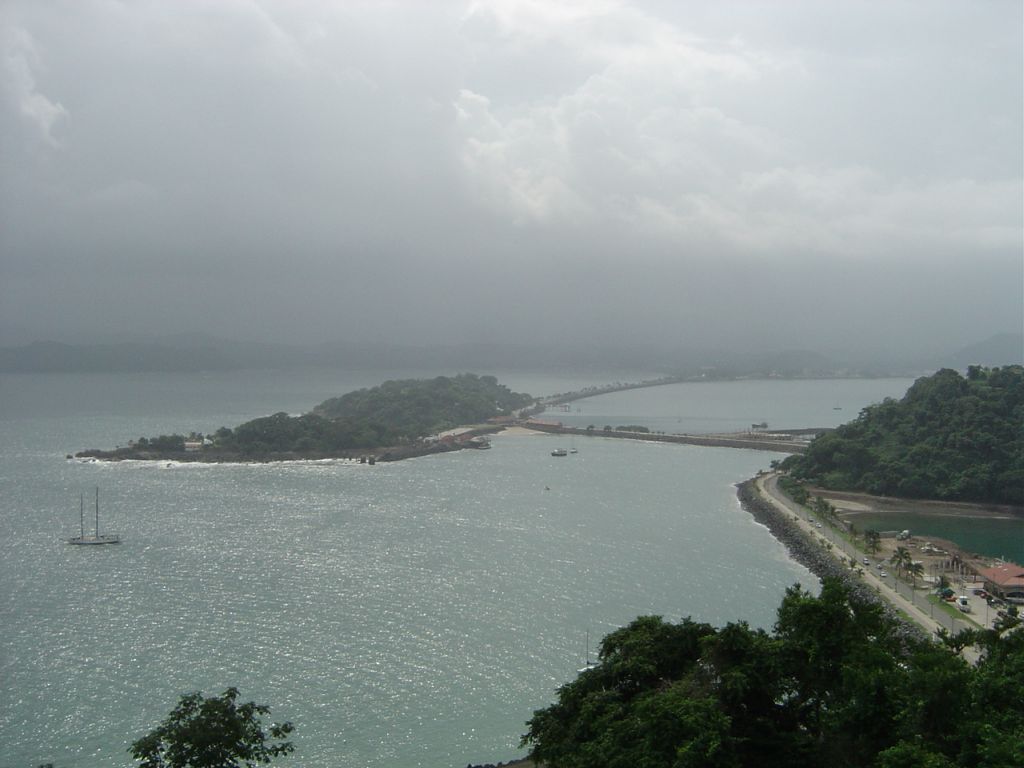
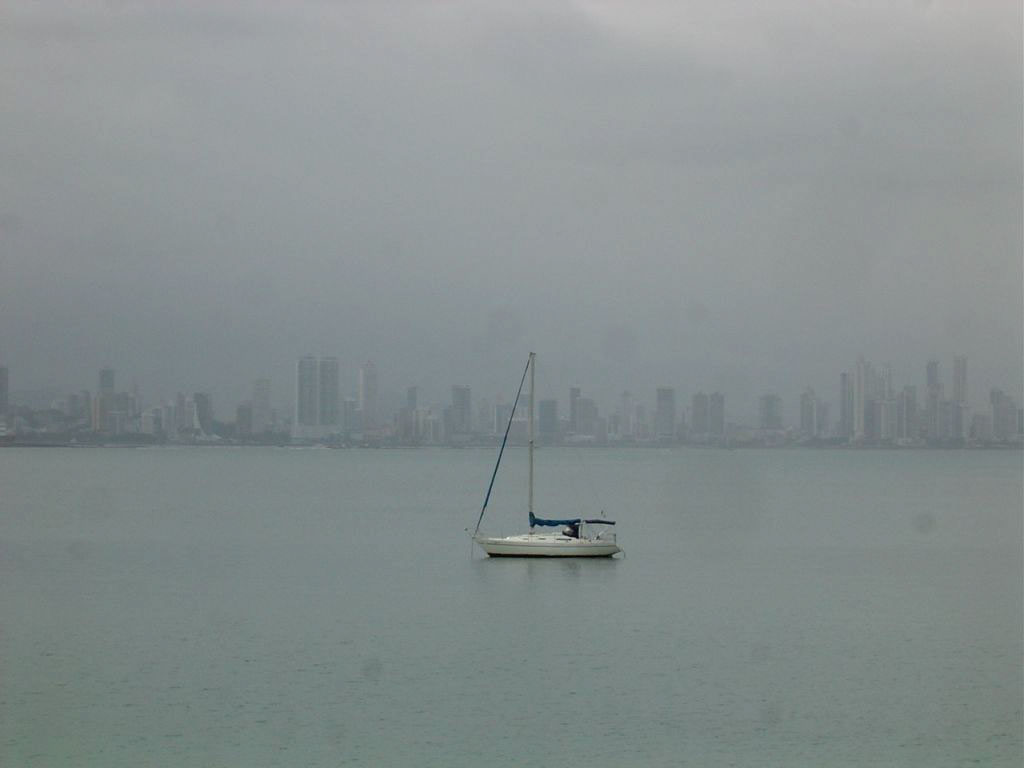
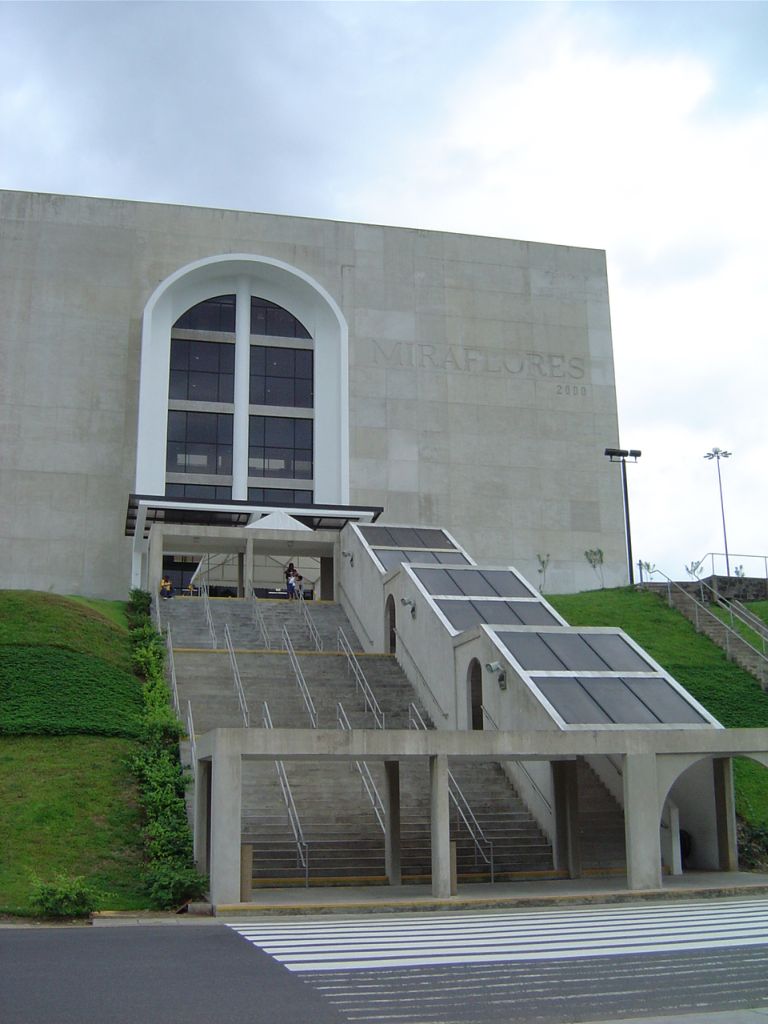
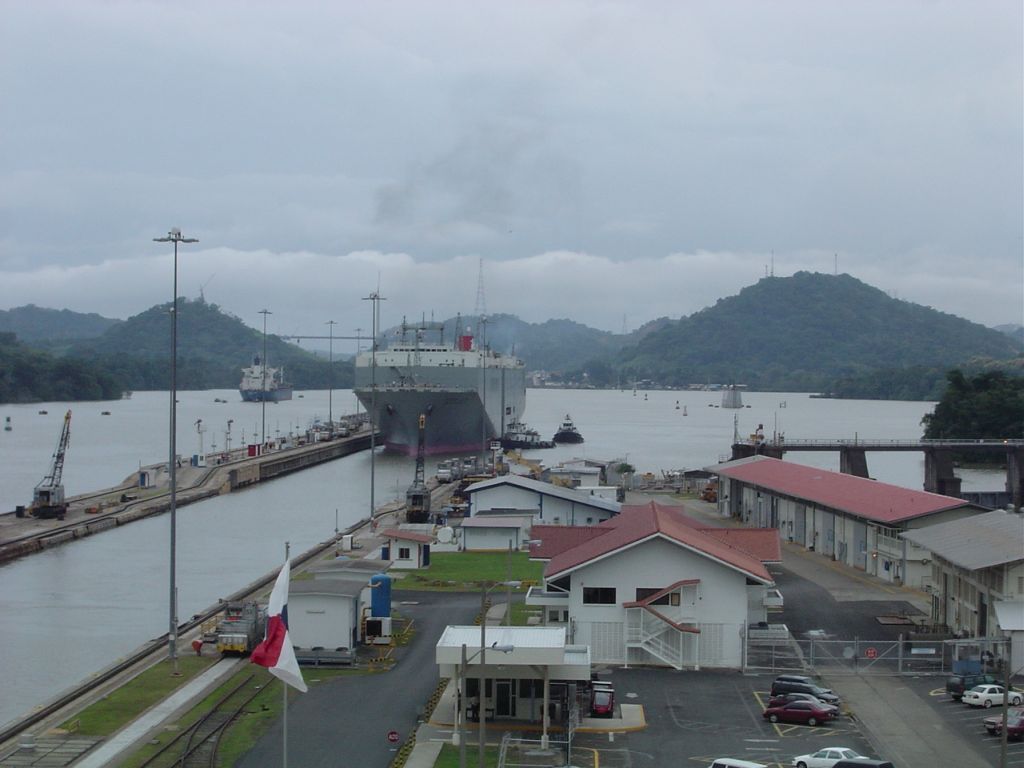
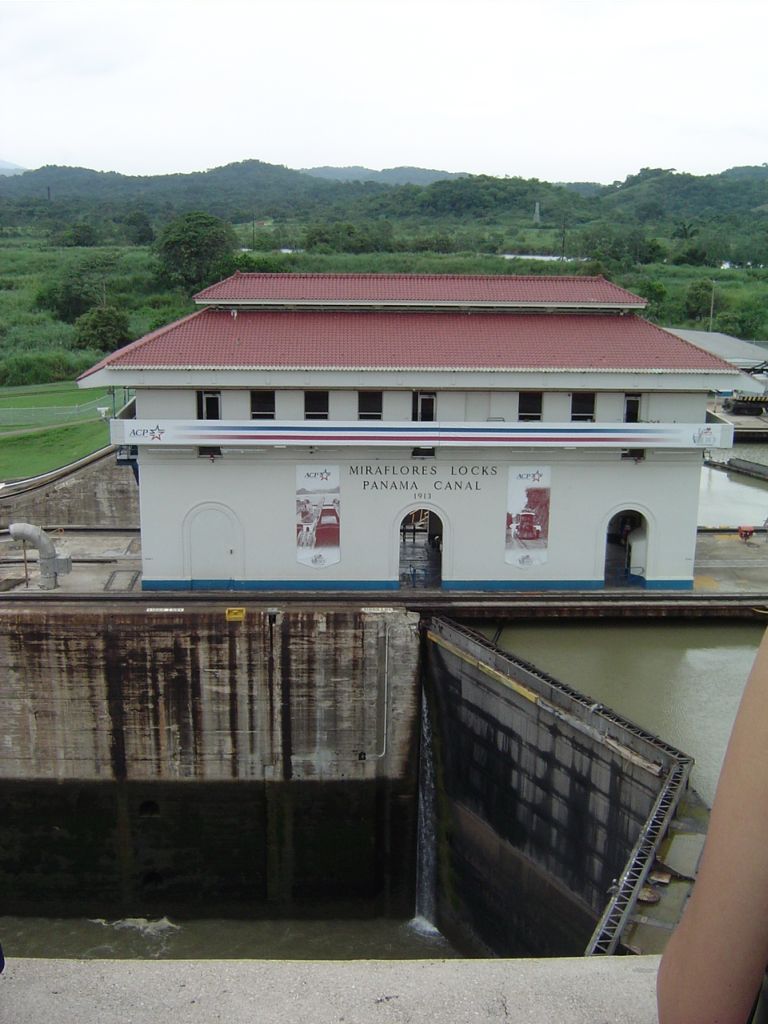
The Miraflores Locks, built over 100 years ago.
Lock on the right is full.
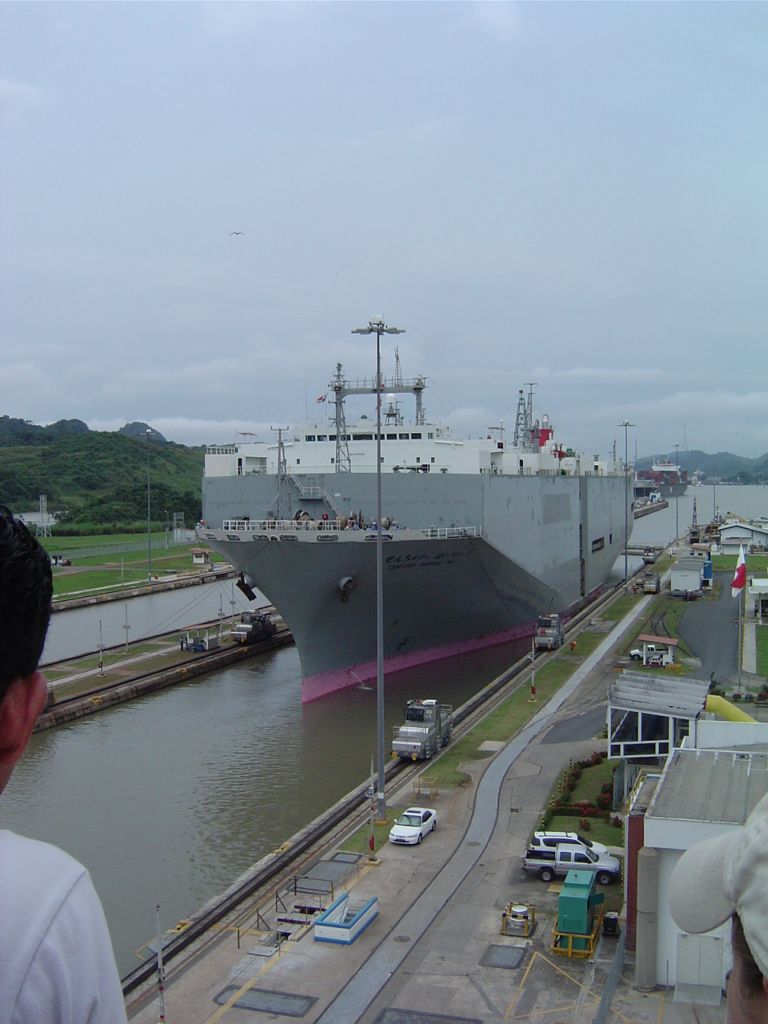
Transiting from the Atlantic to the Pacific, entering the lock filled with water
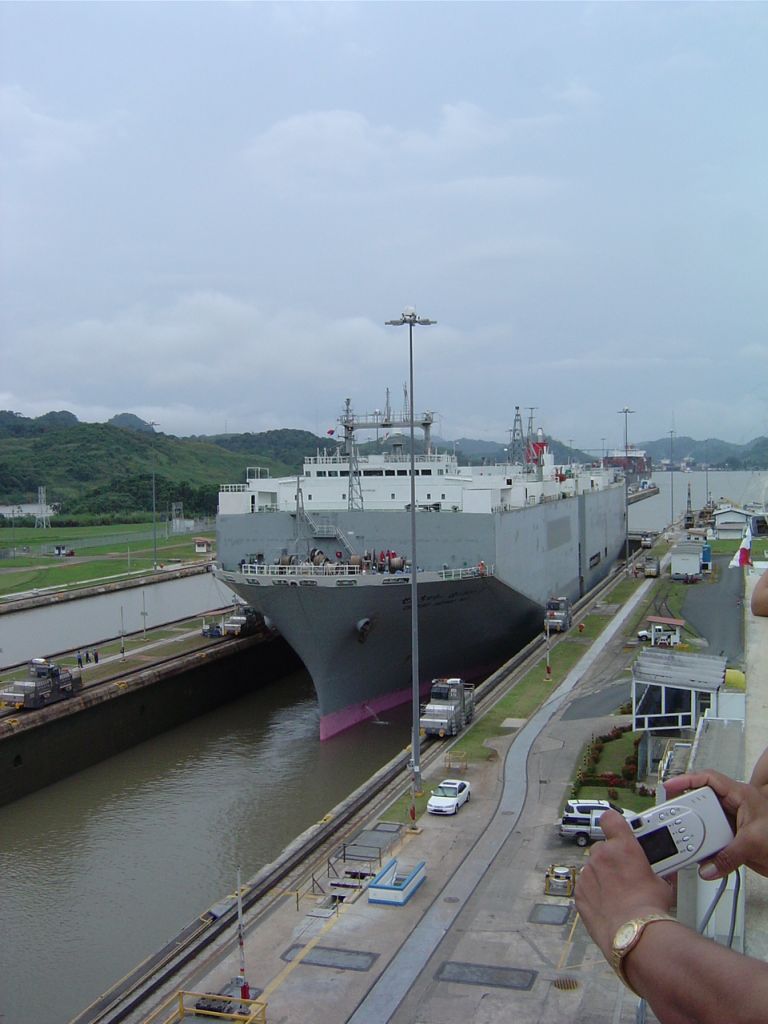
The water is drained and the ship drops to a lower level
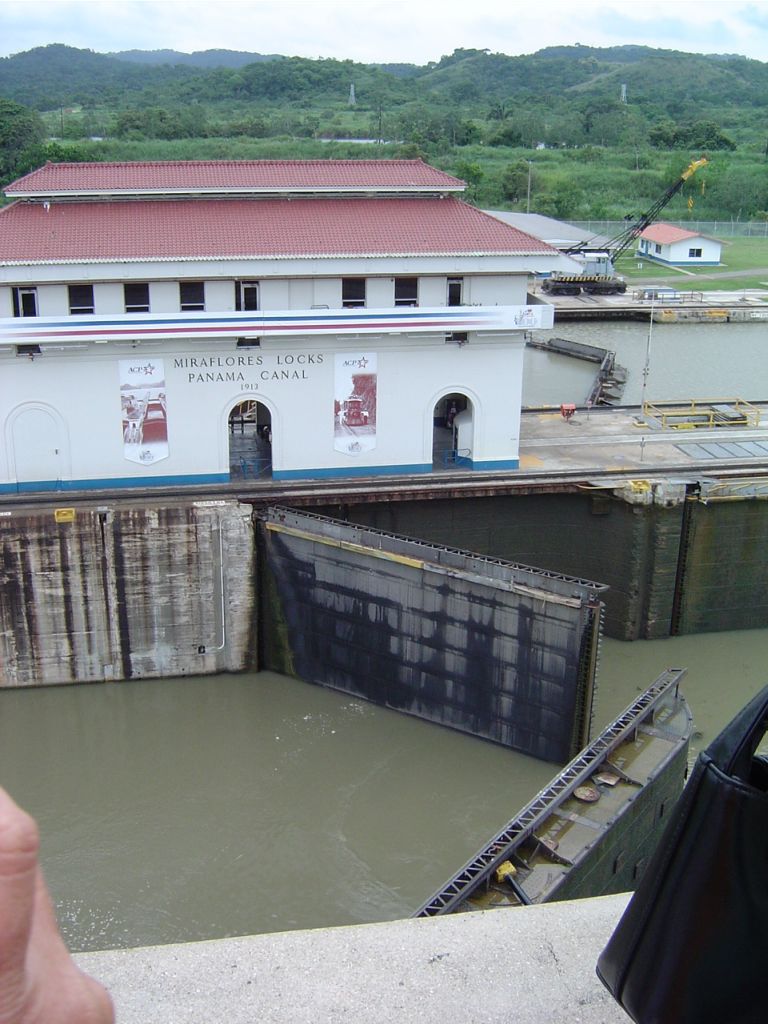
The gates open after the water is drained
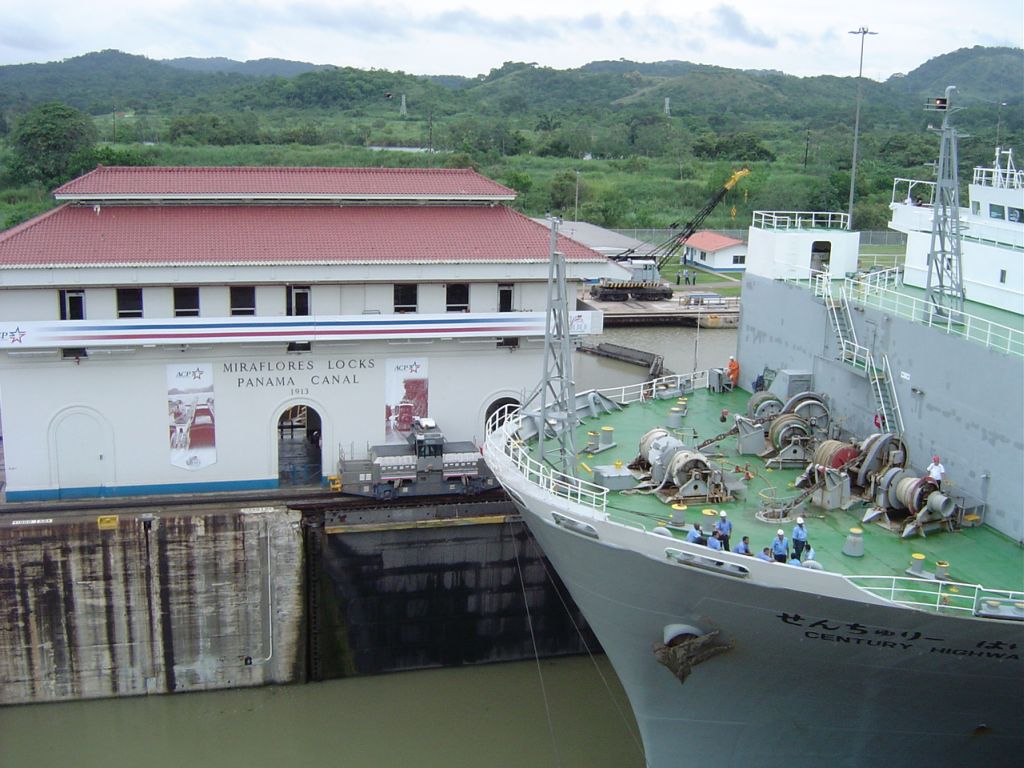
And the ship leaves at the level of the Pacific Ocean